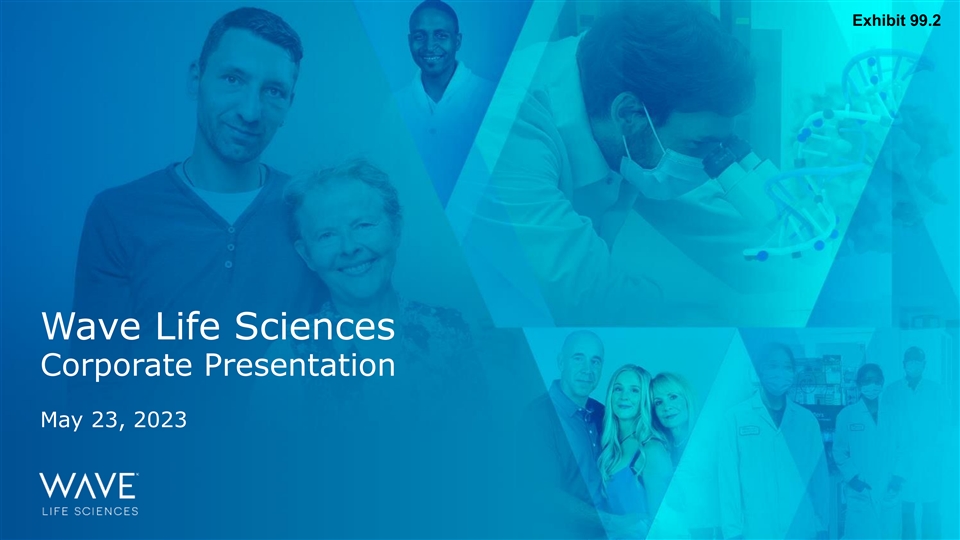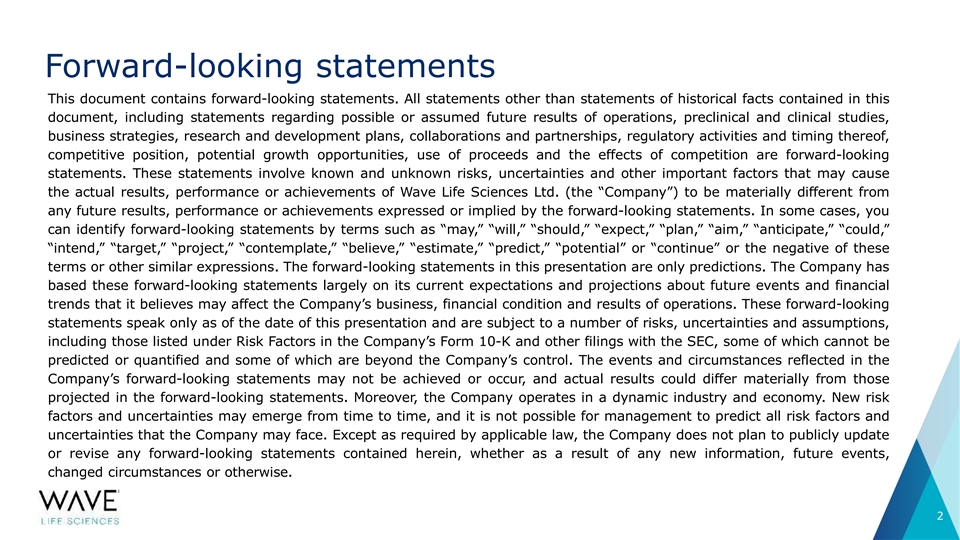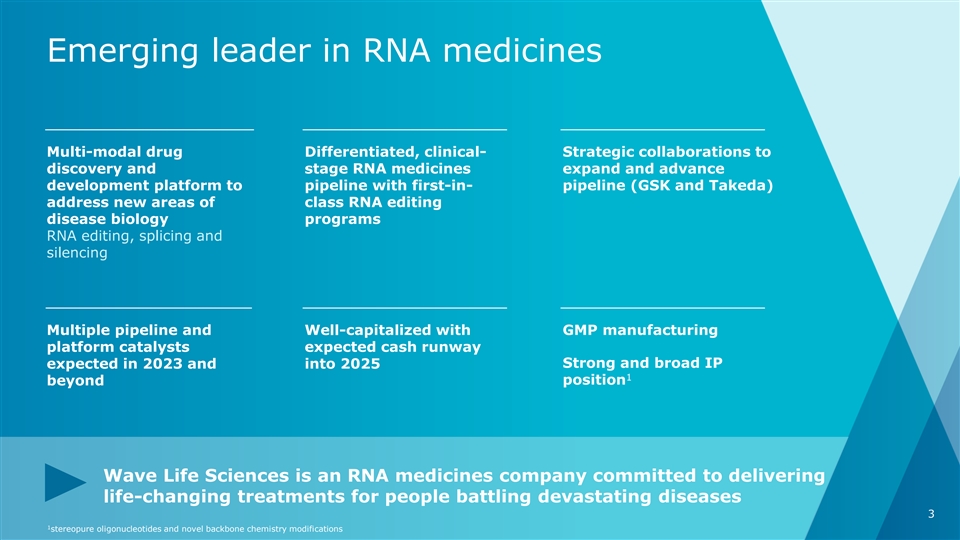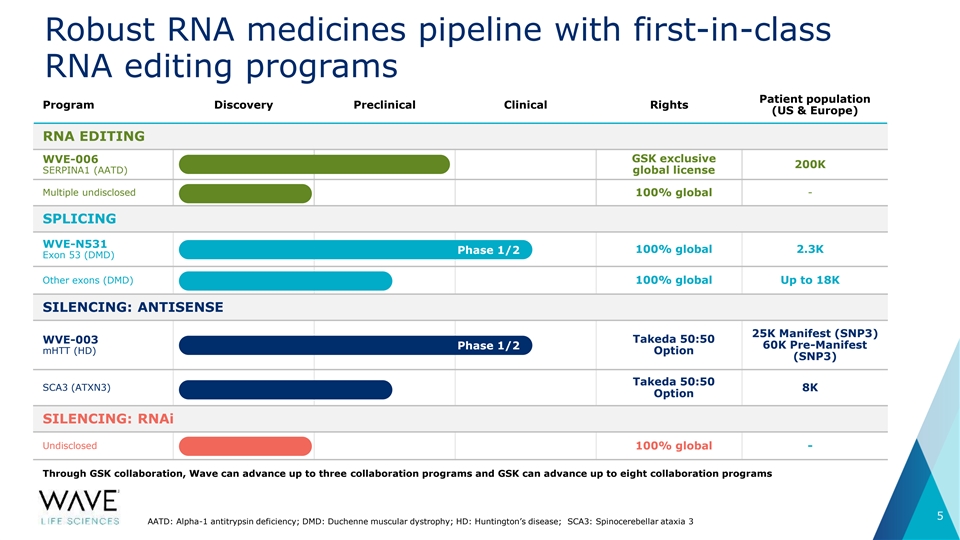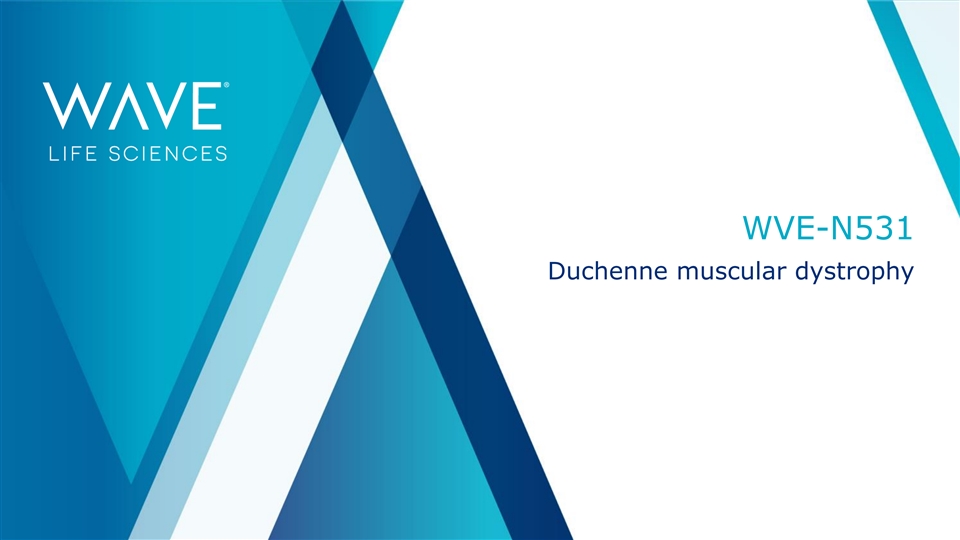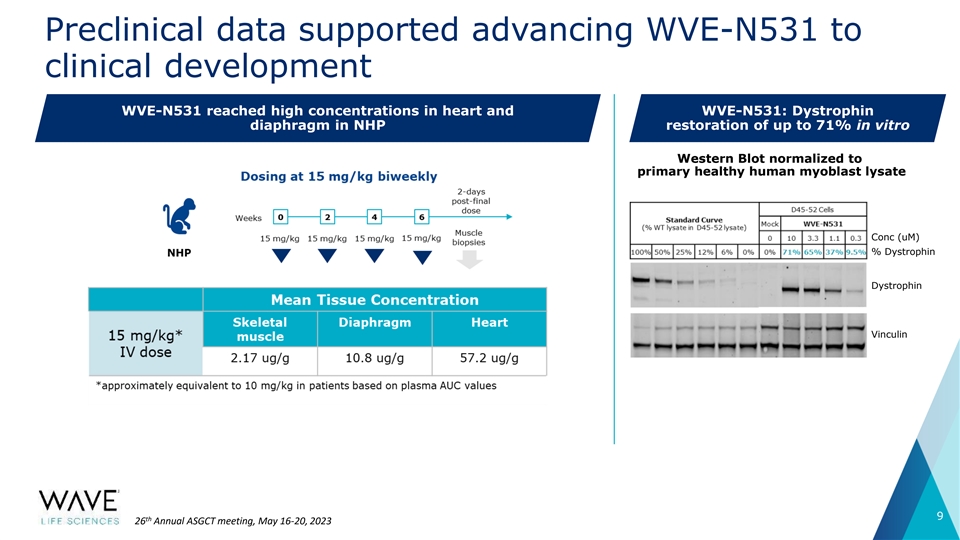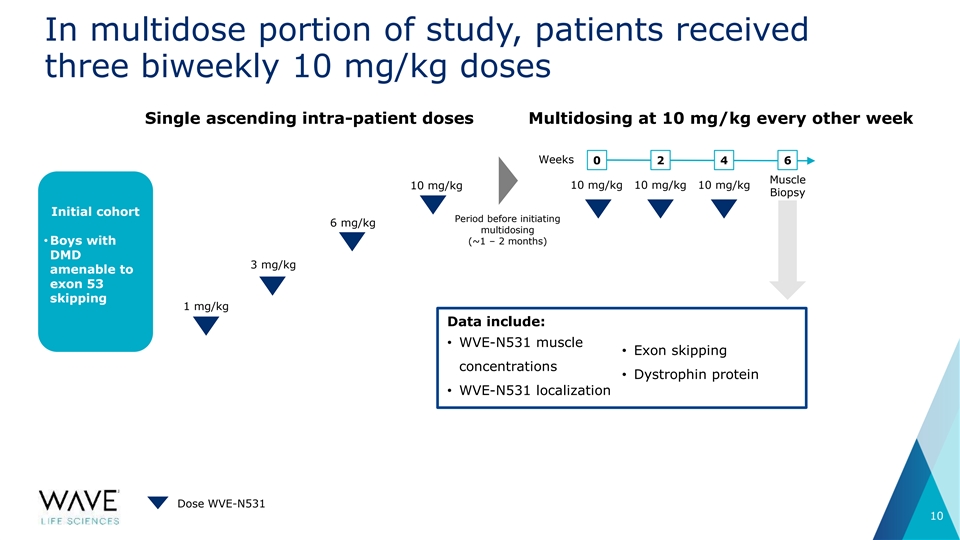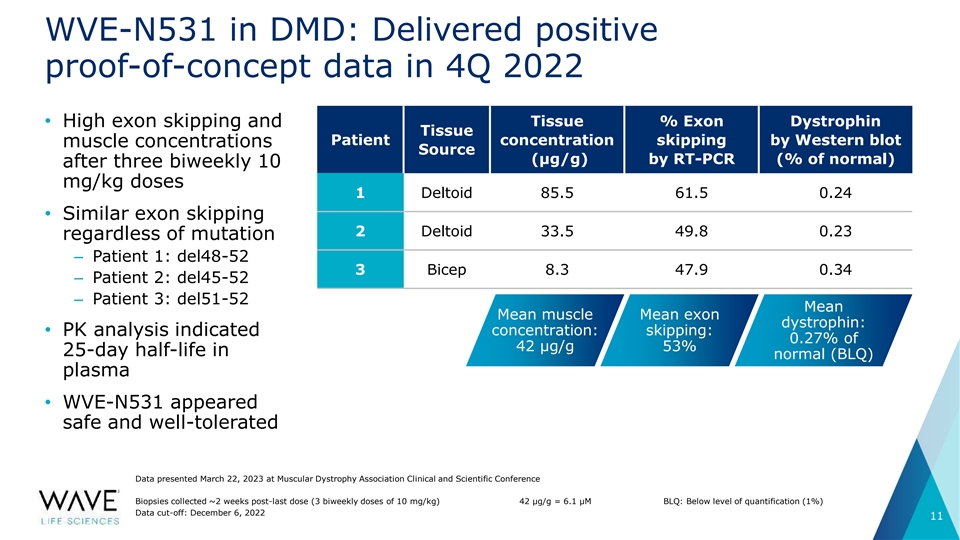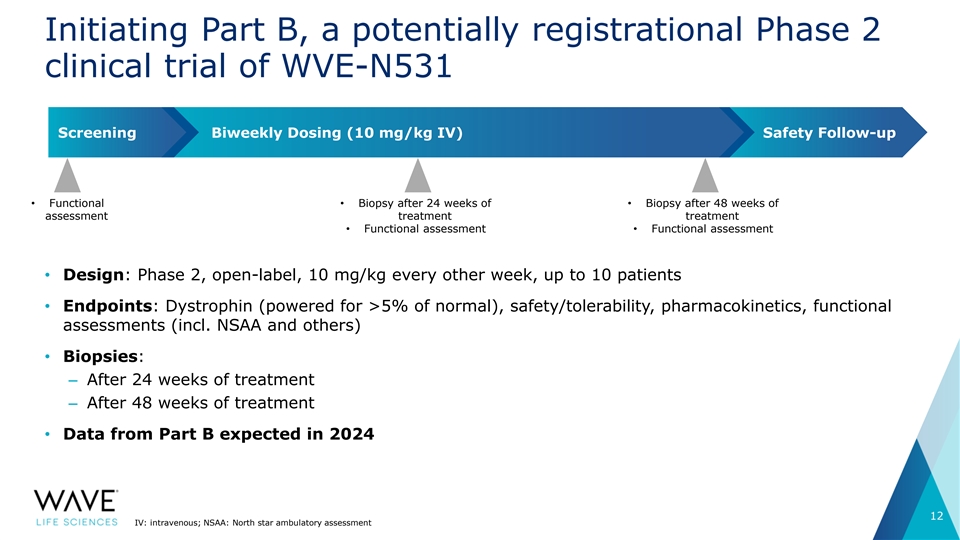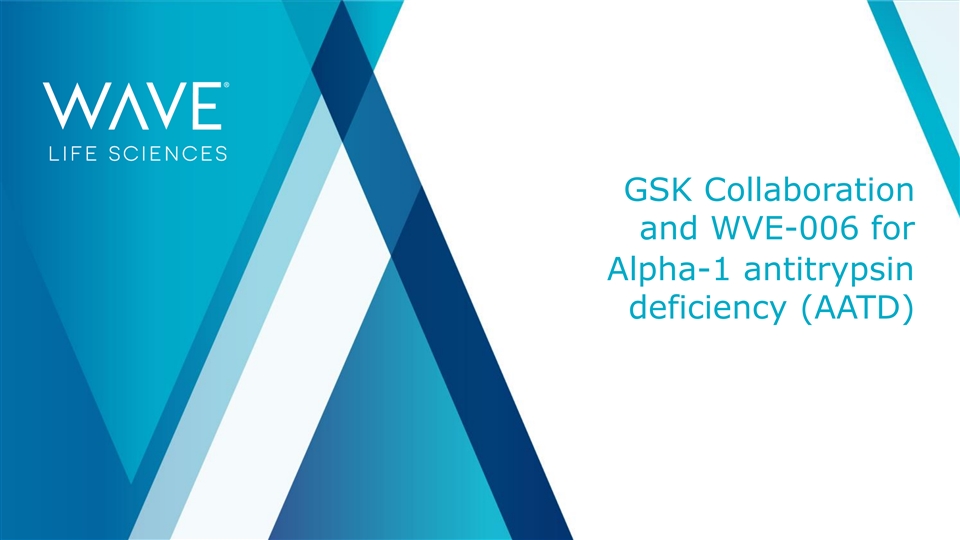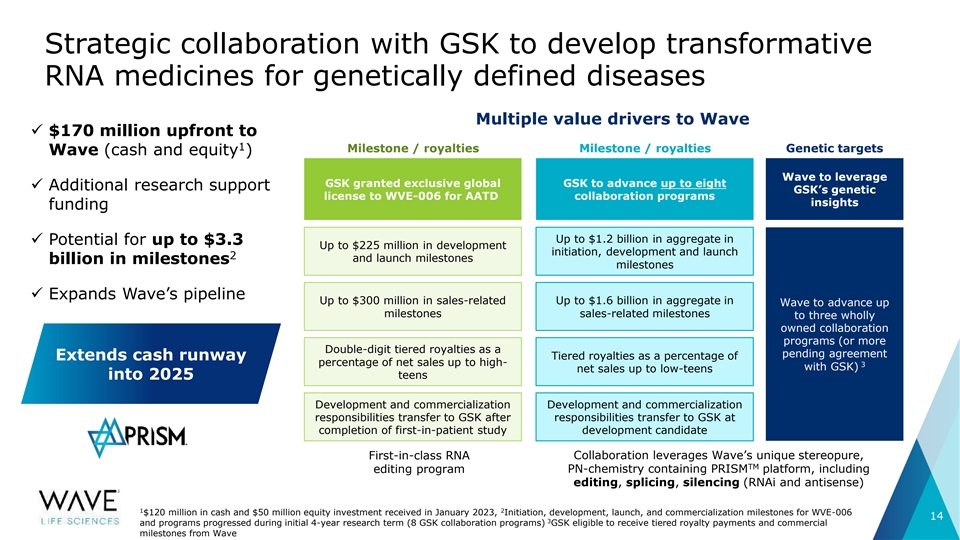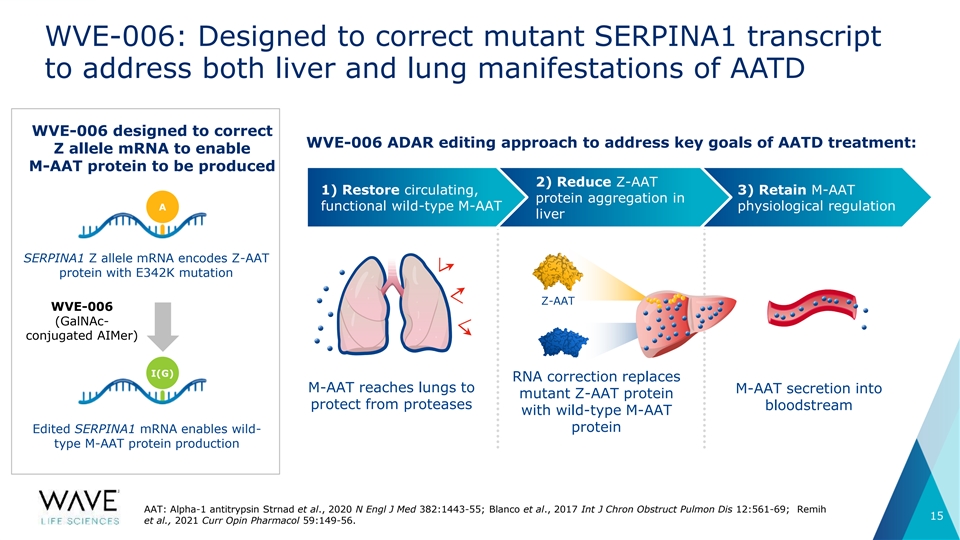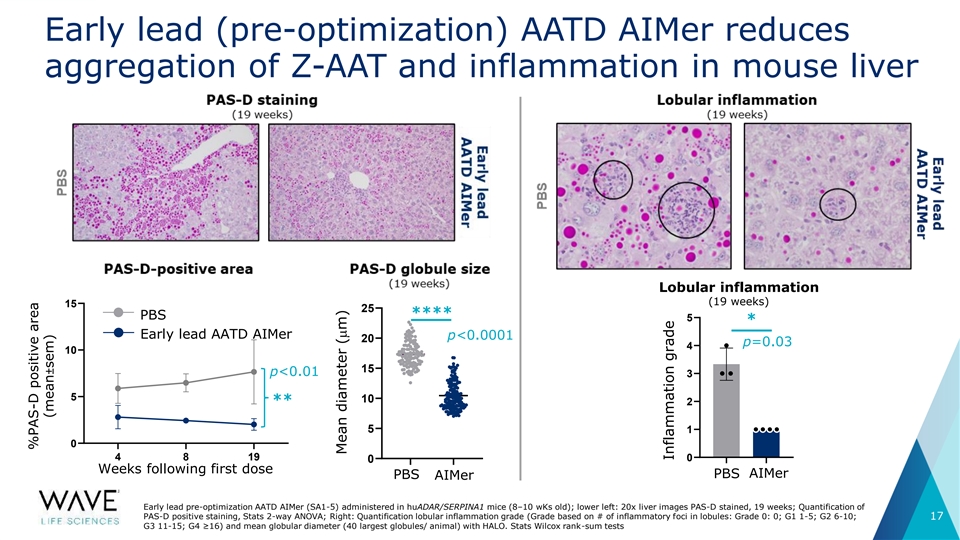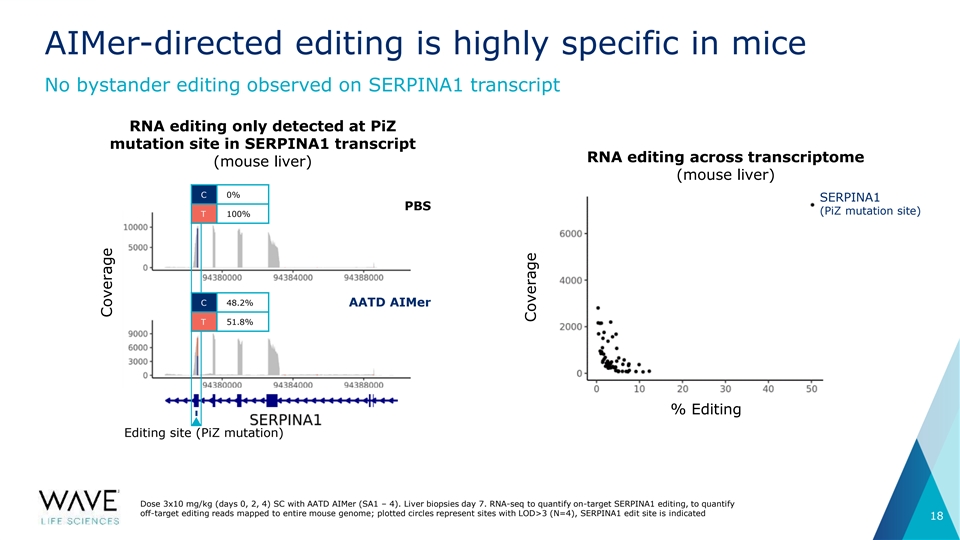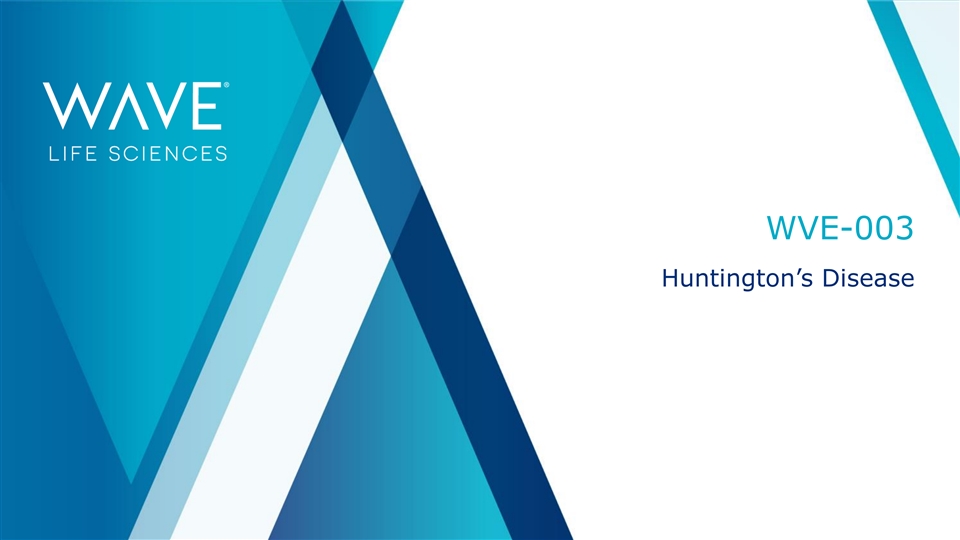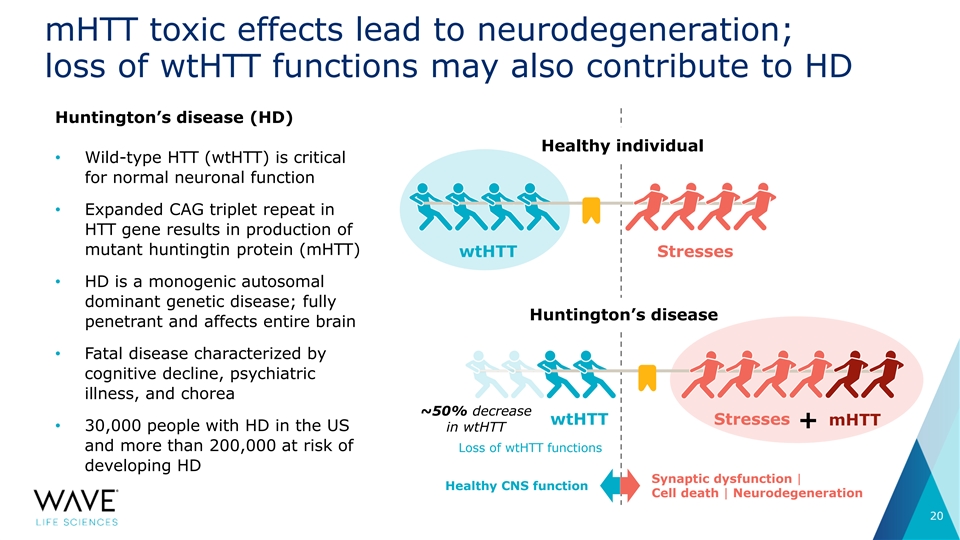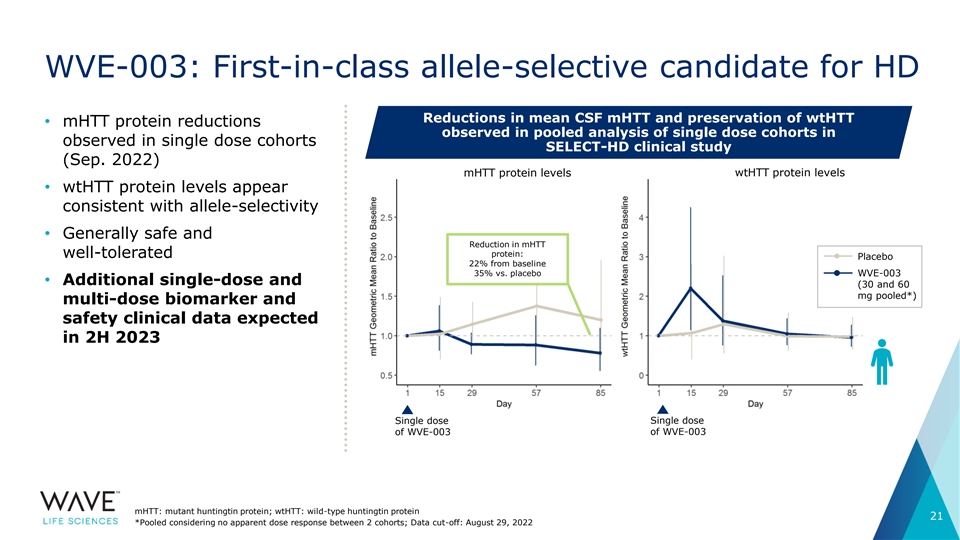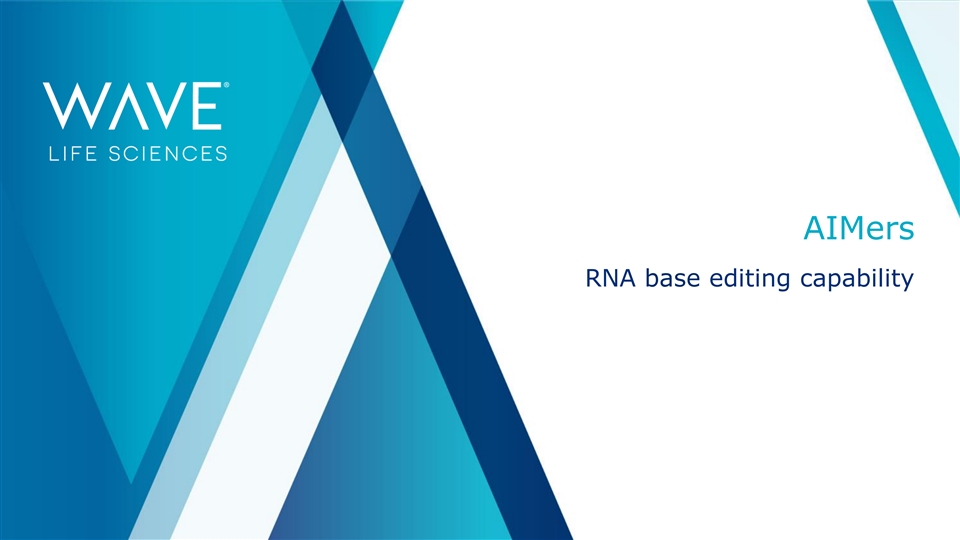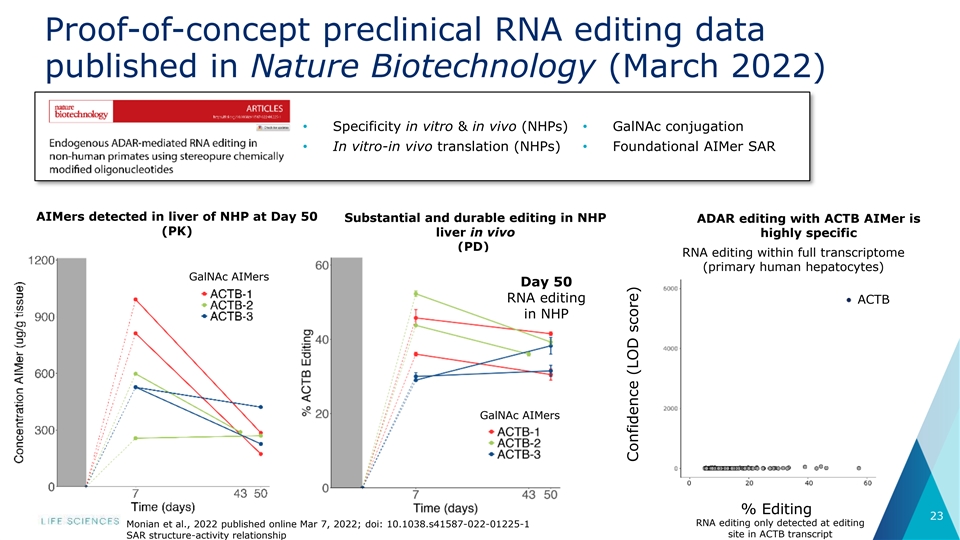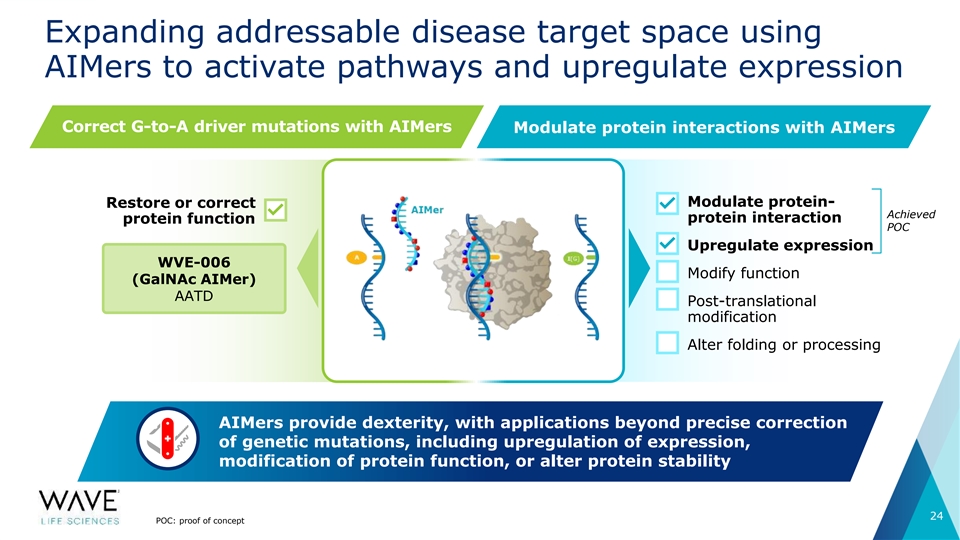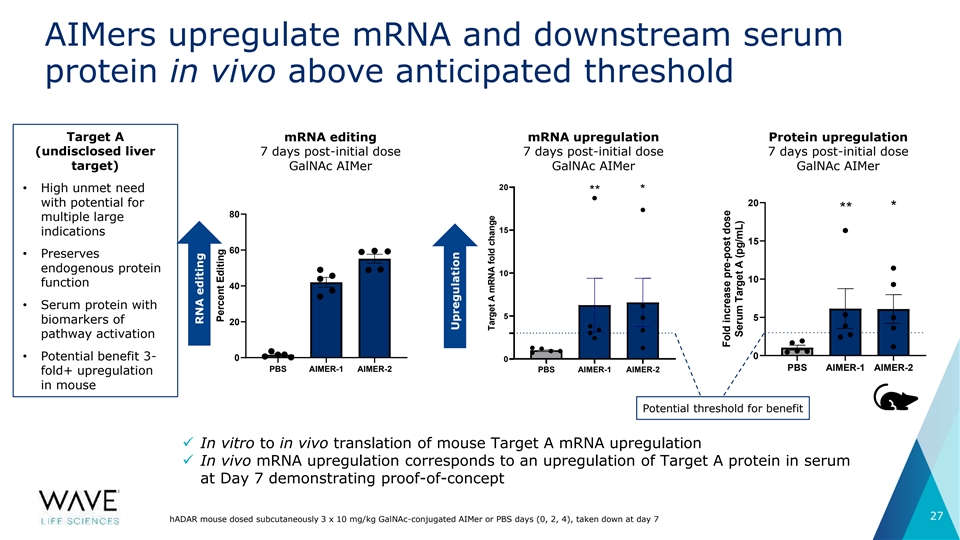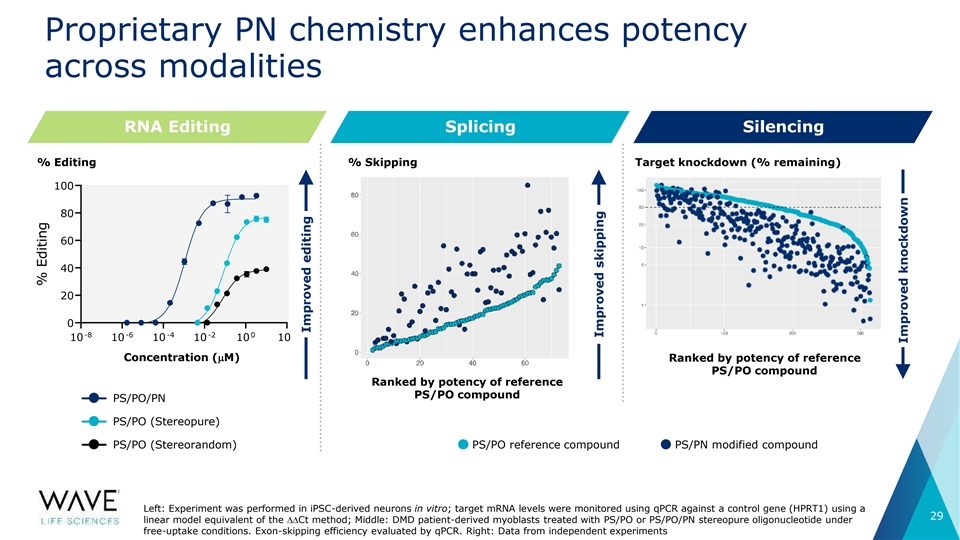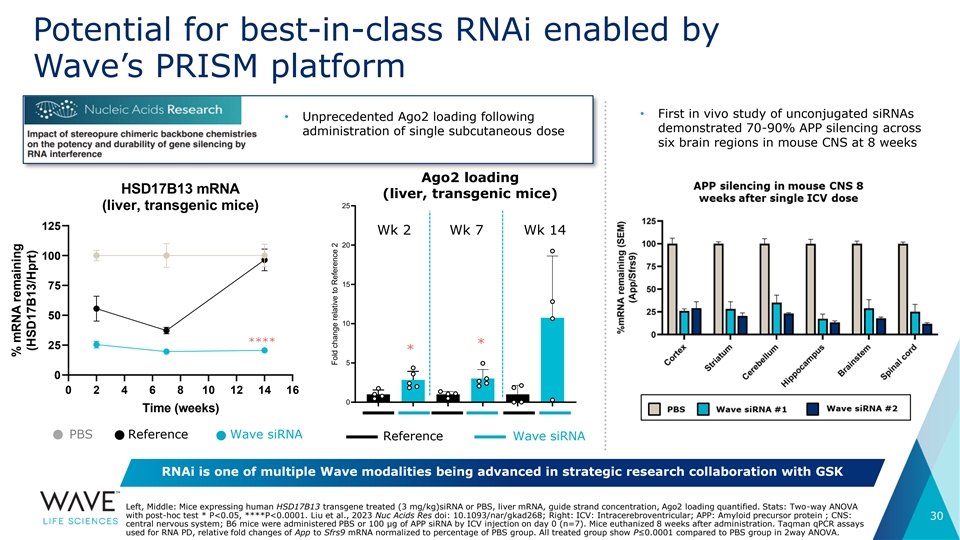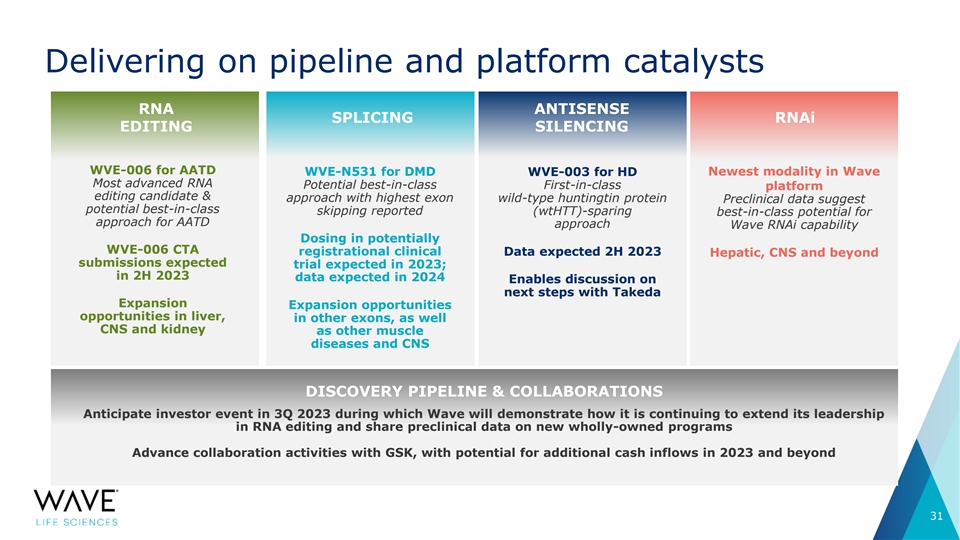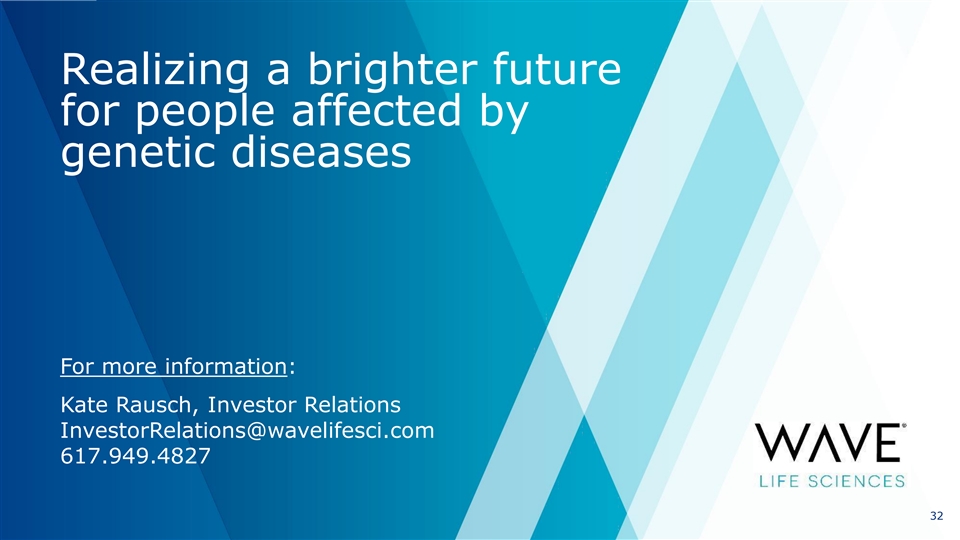HZ7#-&Z217
M&I6]K!)&P=)"G-?2'@_QIX/^(?AK2?&?@#Q7X;\<>#]?MA>Z%XK\(:YIGB7P
MWK5F7>/[5I6N:-=7NF:C;^9')'YUI=31^8CINW*P'\[W_!+7_@B9^Q#=?L5_
M!_XM_M0_ [PM^TK^T-^TK\/=!^-GQ9^)GQF;4?'&NS:C\6-+MO&5II&D3:M>
MRC2#H^E:Q96U[K=H%\1ZUK@U+6=2U>9[FUM['Y^_8;\,2_\ !+;_ (+H_$3_
M ()M_"C6?$#_ +'G[6'P4N?C_P#"CX9Z[K=_K=I\*_'.EZ5KFM7B^'[G4YKB
MY2VDB\"?$'0;F1Y'U#6-%_X0L:]>ZIJ?AM=1N7B.%^'L1'/L'D>:YGBLVX8SR^5+$U<3AI48N>)H0Q4:GUBA3E>5&HU BEG.
M9TGEF(S'!X.E@LVKX?#4%A\15J8K"5<9!SPL<3[2G"E6]HTJ4W1FQQ.LCW(1@3X3X(_;__ &'/B5\2D^#OP^_:Z_9S
M\:?%&:\.G6?@7PS\8/ NL^(M3U%6V-INC6%CK(5?="-C8
M_E\_:R_9 ^'?[JQ0_:X+GNPO!_
M"RQ/#.69AG6C&<
M*:>'OV?_ -IOX&_&#Q%I
M\4T]WX<\ ?$OPIXC\10VMN"9[W^P=/U.75GL(0,R7\=F]F@(+3@,,_S>^-?A
MMH?_ 6+_P""[GQW^ '[1]UK/B;]CG_@G%\/M(?0O@?#K&IZ7X6\<_%76QX8
MM]2U?Q5%I5[93SF^UO6O$,=_B>+/!FA?&&Q^''B.+X(:'XHUC1+
M;4?$GQ N3I^BZ;<>'?#FJW45SXPF\)W6O67B;4]&T^UOLV%B?M\*VI>'] _;"\"QZ]
MIGBR\NK/Q_:?#8_#:_&N^+M0N=-L+8:5XMT>:6"YWQZQ!I^G:!8V\5G;?4'_
M 4ZO/A7_P % ?\ @W[T#]NCXI?#G0-8^,7AC]G3P1\5?A[KSG4+=_AM\3/&
MVO\ P]\)?%"]\,06E[!:BWU&ZM-4TV�H+^.+3E@54693(?H[_@D/\ \$O/
MV ]*_9:_8-_:_P!-_9D\"67[2C_ _P"%GQ-;XLQ7GBL^(6\>Z_X%@76O$Y@E
M\12:/_:&H_VIJ+3I_9GV1&NY/(MH56)8_%N!L?56*S7+,\GQ1F.38Z
MOE^#RZM*IB(Q&(A5CE7-457$2IQ]I.O*I'V%2G3IRGYN)C7SCB7
M"P]G@\3EBR3#9CAJ>(K8RFXQQ&*2EB%3I1Y/K5HJ,.9N,::B^92NC^@*L/Q+
MXG\-^#-!U7Q5XP\0Z'X4\,:%:27^M^(_$NK6&A:#H]A%@2WNJZQJEQ:Z?I]I
M&67S+F[N(84R-SC(K)DT&YA\0PZ7
M<6WYYPMD?^LF>8+)WB'A5B5B9RJ0IJM7E'"X6MBY4,+0E4HQKXO$*BZ&%HNK
M34Z]2"E)1NSZG.\
M!^ _VC=2\=^ HO"VAZY;>"/%GB76O U_JEW9>*]3T?P!XJ2_EU?2[7%K%>:W
M::1)[_ .!OQZLKZ[CCAM6T73?$DWA[Q1XC\16\CKBRU[0?%D%S.'-[IU_&7#<-
M_P './[+'P3\*_\ !-/P'\5QX/MM:^,7P$U'X+_ KX=?%;5Y[IO%NE?#RZN?
ML>M:2XLY[319CK[:3:W>IR/I)/VG>UI]E3:B_;Y'D7#5'C3A; 5\+Q)36(S6
MG0QN4\29-A*,JEYTUAG*+K^SK83$57.EBZ=2@IT81O#ZPW8^?S#,LVGD.:XF
ME7RFI*EA74P^-RO&UIPB]'*+:A*<*JBU*$XR<9)ZI;/^@'X%?MF_LW?%#PQ\
M)](M?VG/V??%GQ4\:^$_";S>%/#OQ=^&M]XHUCQ;?^'+34-7L-.\*:1XAEU%
M]0%T+Z1]*LK RVRPS(($2!@OT!I7Q6^%VN^._$/PMT/XD> =9^)OA&Q@U3Q9
M\.=*\8>'M1\=^&-,NEL'M=1\0^$+/49O$&BV-RFJ:8T%WJ6GVUO,NHV#1R,+
MNW,GYB?LB_\ !(7_ ()L_"NS_9[_ &AOAY^R5\._"OQF\,^%/ _CO0/'NG7W
MC)]6TOQ;J/A"U-YK=O#>>)[K3VNISJ=\6$]E+#FX=A&&"E?SS_8BBC'_ #HRJ8JGFV"P/U:G'#8O$16&]EC%-57*-3GAR^R4=3T'F>88
M*GD\,;2PDZF99C0P*EAZE>2A2J82O7]K)U:<).K>A9JSB^;I:Y_2A\0/B5\.
MOA/X38VD^N>(K_3=,BN
MKR;]U:0272RW$GR0H[<5U=C?66IV5GJ6FWEKJ&G:A:V]]87]C<17=E?65W$E
MQ:WEG=6[R07-K_X.E423_@DA\0UD1)%_X7'\
M$SM=0RY'BML'# C(K:_X*U?MB_$']BK_ ((J^#?&OPBU6Z\.?%'XH?#[X"?
MGP/XHTV;[+JOA*Y\>> H;OQ!XAT2=1YEIKMAX+\.^)8_#^H0%)](URXT[5H&
M$MB@.&7<(U'-)V-L7GE/!8C-8XBG:AEF74L?*<7[]3VCJKV24K13;IJ,6VE>2YFE=K]
M3_B%_P %!_V%?A-X_?X5_$W]K_\ 9P\"?$:"[^P7W@WQ3\8? NCZ]I-^9?)^
MPZY8WFMQ2:#>^9\OV76?L-QR&\O:03^'O_!*#QQJ'B__ (+=?\%H/LWC;4?%
MG@Q)?AM?^$DB\57GB'PG#I]_?R2PWGAF)=0O=%@M+N%E9)](1(9HR &8<5]#
M_L8?\&^O_!.WX:?LV^ -&^/'[/GA3]H#XU>*_"&C>(?C!\3/B9M:KXX
M\1:;;:IXD@\/'^UX(O#>C:;J=U=6.DMI4=KJUS;0)?ZUJ6I:O<75[+\.?\$.
MO@Q\./V=?^"PO_!87X'?!_P^WA3X7_#.V^'?AOP1X:.I:GK T+0U\1:EJ$6F
MQZGK5W?ZM=P6]Q?7"VSZA>W=S';F*%[B7R@Y^JP6%X6P^1U/47T/4_,LKR/[!JBVMWOM+E?*W02A-[QEXU\&_#KPUJOC3X@^+?#/@7
MP=H44$VM^+/&6O:5X8\-:/#GQ7%]=6MG!)=W4*RW5S!
M;QEIIHT;^672H(O^"6/_ XO(HXP&2"W^/MJN2+4%/0_^"^7B?Q#^UQ\&?@3X!O;^X@N-02-F4VS_P!B^-?&T=O7YA6JX9+,CZQID]UIVIZ=>0LLUK>V5Q/;7$3+)#*Z,&.W7,^"_
M!WAGX=^#O"G@#P7H]GX>\'^!_#>A^$?"N@Z?&(;#1?#GAO3+;1]$TJSB'$=K
MI^FV=M:0)_#%$H))YKIJ^"J>S]I4]ESNESR]DZB2J.GS/DYU&\5/EMS]
MM#Z6'/R0]HHJIRQYU"[@IV7-RMV;CS7Y;J]K7U"O(I_V@?@-;7?Q#T^Y^-OP
MBM[_ .$5O%=_%>RG^)/@V*[^&%K.YC@N?B';2:TLW@NWFD5DBF\2)ILCGN*S3'XK 83),MI9C4GA,)#&5JRGF.#P3HPHU*^&CS
MS^M?NY2JPA&?+*I)4U)GCYOF6*P-3+J&$PU+$ULPQ4\-%5JTJ%.FXT*E95)3
MC3JRY5R>\HPE)JZBKM']8_P6_;?_ &.OVC?$VI>"_@-^U!\"?B]XPTE)YK[P
MM\/_ (G^$?$WB)+6UW&YOH-&TS59]1O=.MMI^T:E96]Q80_+YEPN]=WO7C3Q
MUX(^&_AR_P#&'Q$\8^%? 7A'2A$=4\4^-/$.D>%O#FFB>5((#?ZWKEY8Z99B
M:>1(8C<74?F2ND:9=@#_ "%?\%S?^"7_ .S9^P3^SKX$_P""A?[ W@6/]F+X
MX_LQ_ ZB;KX>:QKT&B:]HFO:]#X?LY[W2-2U/48(=8TSQ)=Z");RQ:SBU
M[PY>^(]"\26^L6^H6QLOWI_:DA_8S_:W_P""=O@_QW^WKJF@^#OV8/'O@GX'
M_'?QK_;WC?4? >B175S9^'/B%X;T.?7]+OK#7;E;C6;FSL+?1M&NUUG7I/+T
MRQ6>XN5AD]#'\.9+['A_-\HQF<8K),XS&OE>)HU(P^+I5L$H5:?-)NE5Y9*[YL+FN8>US+ 8^C@:&88'#4\92JT\1567U\
M-6]I&%6=2K!5J"I5*4H5^>+76#:3:]2TC_@IM_P3JU[Q%'X3T?\ ;D_92O\
MQ#-<"T@TV#X[_#?S+BZ9MBVUM,_B);6XGD?$<<4$\CR.52-69E!^P]=\6^%?
M"WAG4?&OB;Q-X>\.>#='TN37-6\6Z[K.FZ1X9TO1(8?M,NL:CKVH7-OI5EI<
M5N1/)J%S=16B0_O6F"?-7\3GQ1^-'_!KOXS\&>*/A3\*?V,/BE\3%FTS4]"T
MSXA?LU?LX?%>Y\4Z3?O:S06FO:'XS\2ZQX;UR]OM.N#'>VQUU=0L;QXD34K&
M^L9)H)/T._X-R9(?VMO^"1/Q ^ '[1<4_P 6OA9X>^+_ ,6/V?H?#OC"ZOY?
MMWP>N_#'@?Q)!X(OY8+J'48-+T^;QCK%A86<%^ATG2S:Z1826]EI]K%'ZV><
M"X3+LEEGL*/%&68?"9CE^%QV#X@RW"87&5L+C_;6Q6 ]EB;.K1=!QJ87$PI)
M.K3E[>RDCAR[B.OB(KE)+GPI-#]DFEA=K
M?^>#_@B'_P $S?V$/VI/B3_P4\T7X_?LV>!_B7I7P,_;!UOX=?"2QUR\\50Q
M>!O ]MK?C^VM_#>DMIGB&PEDL(;?2-.B1]0DO;MEM(S)]F>4)QV
M9K#XJA3P^,J1=/%XQ8RK.EF%6*A5J\M-QIJ,7&+A4OR1A!KEWRY\1?\ @HE^P9\(_&\GPV^)O[8O[-G@;Q[;W9L;[PEXD^,?@73=
MF_P!O/J6D/#JUE8S1_FC\"OBC_P &G?P>^"FD?"7Q'J_P
MJ^,^N-H<%GX\^+/Q1_9Z^//B3XD>._$D]N/[=\4/XFO?AO+J_A:;4[][BZL[
M#PI>Z1;:-$\,-EB:)KF7YG).")9AE2SW&8/B7,:&,S#%X/!X3AC*/K]>V$=/
MZSC<96?^SX2C[2JJ.&PZA*KB:E.NTZ-*BYR]7,.(X87&O+,/BO%T[XN7S?$SP4+/X6Z@]S>V:6'Q%N
M3K?D^";U[S3=0M$M?$KZ9.US87D"QF6UG1/Y@_\ @W"^//P[M/VE/^"B/[&W
M[-_Q+UWXI_L6^!?$7A_XV_LIZCX@'B*.Z\*^%/%^JW^E^)O#EG:^*['3-?M+
M$75SH=G-#?Z=8F\U?P_JGB3[-]L\2:A!R[&\44LXS3'X7!%QL88R-"K2JUU##XJ,W4FZ4&Y9PXFQ
M.*HY*\!@\-6Q&:XC'X6<)XRV'H5)]5TWX?>*X]0N+[
M2(+ZRL+:Z\0VVD2P:=./(-W#)*RG\BO^"QO[#_[.O_!,/XY?\$UOVQOV&?A[
M9_L^^-U_:R\+?#GQ9HO@O5==C\-^*-(U VFI 7.E:CJ=_#9G4-#LO$WA/Q%#
M8&VLO$6@^(I;;5[6ZDM;>5?J#_@ZZ^ OP@U']B3P[^TS>^!-)N/CQX.^)_PW
M^%/ACXE/)J UW1_A[XDN_%NMZYX7MHDO%TQ[#4=4ACNYFN-/FNED'[JXC4XK
MTL@X:X<7$_ >,HU<;F.0<28O$4X8/-,%@Y8F&-R_%+"UL)CJ4:T\)6P=6WPE>NJ$Z.*I>VHUJ$Y4
MU6IUHJ,J,?B5XMT#0R
MGA3PQ\7_ (;ZMXGUCQ!-H46I:I::;X8T;Q%<:E/=QF*^N);"RLGDMH;>=C$D
M4#E>W^-?[3O[.7[-UA8ZG^T#\=OA)\%K/5!(VE2?$[X@^%_!?L#Z/_P %>/\ @HNW_!=+0'OOB=L^*5\-6>F:1IEOJ&G6>E:AX';X?77@O6M7T>Z\*O9_V_+_ &AI
MOB2XU9M1\?*^%\CS[&YM/*JW$.)P63X!8W$8"CEF"J9[C:U3'1POL*_$O]C+]A
M'_@D!JW[0_@_]N+_ ()YW_PJM?&G@#1/%WAO6;;]G/XFZ=K?P^U33/B!H=WH
MMQ:^-_A]!J.MV_AC4K93]MT=M,MO"-R9[4B^M]1@ 2/]M*^1SS"Y=@\=['+)
M9K[)4H.M0SG!4\%C\)B>::J8:K3I5JU.HHPC3J0K+V3E&KRRHPE!W]S+JV*K
MX;VF+^INISR4*F K2KX6M2M%QJTY3BI1;;E"4'S+_"_@+P=HB6\FL^+/&GB#2?"WAG2([N[@L+5]3U[7+NQTNP2YOKJ
MULK=KNZB6:[N8+:,M--&C<9XH^/WP)\#^%O#GCGQK\:OA)X0\$^,+.UU#PEX
MQ\4?$?P=X?\ "WBFPOK6"]LK[PYXAU;6;32=;L[RSN;:[M;G3+NZAN+6X@GB
M=XI8W;\MO^#AM(W_ ."._P"V4LL:RQG0_A66C=0RMM^.OPP8 @@CJ 1QP0".
M17P!^PM_P0,_9 _:3_9._9L^/'[:_BKXT?M7_$3XB_LZ_![4O#,?BOXF>+_!
MO@OX.?#V^\ :!<^#?A7\,?#'@K6-);2O#_@G0YK71(Y[S4KR+5;BUFU5--TU
M[M[9?=RKA[(JG#D.(\\SC'8&B\\Q63K"9?EU/'8FO[# 8+&1J476Q6#H4[/%
M2565:LDHP@J4*LYRY/+QF:YE'-Y93EV!PV(FLMI8_P!OB<5+#TJ;J8JM0<9J
M%*M4FK4DXJG!MRE[THQ6O]/K^-?!T7A$>/Y?%GAF/P&VAQ>)U\;/KVEIX1;P
MU/:)J$'B$>)&NAHQT.:PDCO8M6%[]@DM'2Y2X,+!S\L> _\ @HM^P3\4?'<7
MPQ^'7[9/[-7C/X@75ZNFV'A+P[\9? >I:SJVHO*(4L-$MK?6V.N7LDI$<=KI
M#7L\CG"1L:_EZ_X*\_%W]F+PM^V7^Q)_P2H_:!^+GBOX$?\ !,G]FGX$^"?&
M?QHTK19?'>N:M\3KG0M(U70?@[\+/$=YX.LM;\6ZGI%IHW@[0('U%K8O;MXC
MU_79;B+7]/\ #NIZ=R_[7GQ6_P"#6GXN?LO?$7X;?!^Z^$OPK^*VF> M>G^"
MGC[X:? 'XW^#O&^A_$?2=+GO/!4M]XIB^'-I<^(;&]UZVL;#6X/%]_J%O>:=
M=W0^LX3$Y'D#QV#RW 5L34H8/$9
MG6]HXU<15IP6+KX+"U(O#8:4&Z]2I-0CY>)XKE3K8RE3KY%0EELO8XFCF&9J
MAB,5BJ=*%7$4L'3LI0IPE+V%*O6C:K4NU",8._\ ;U7RQ\7/VY/V,_@'XDC\
M&_&S]JK]GWX5^+W:)3X5\=?%OP/X;\20>IZU!J=C#,CJ\,]Y:P0R
MJ=TTC]K"?Q/J%_P#M):=IE[^S%X=^(FHS+J6L
M?\)5;_$R^^%VC_$*[N[CS#J7BK0?A];?V]_:5]]K?4_%^DIJ6IB[^U72R?6'
M_!.?_@A'^PII?[*'PN\>?M0?!3P]^TU^T5\<_ ?A_P"*OQC^)OQBNM;\7:Q)
MXG^(^C6?BF^T31#?ZH8],@T#^U!IKZ["G_"2Z[J,%WKFJZO-/=PP6?D3X0R_
M)*.98OBG'8VE0P>?X[AS"8;)\/0KXK'XS+5&6-Q2J8RM1HX?!4(5:'+)JK5K
M5*R@H4U3G,]".>8K,*F$P^3X>A*I7RRAFM:MCIU(T,-1Q+Y:-!QH1E4J8B;5
M2Z3A"G&',W+F27] '@7XA> ?BAX+/#
MM^$QO^QZUH-[?Z;<[,C?Y-RY4D!L5X;\'?B!\2_"?ASQ%-;7 #07BZ!J&IQ:N+*4',=Z]DMHXR5F(!Q^8WCW
M]G/X#?\ !"?]BG_@HG^TC^Q]I&O:!8^)?"^F_$+PY\,?$FMS^*_!O@?XIPVD
MOP\\'R>&9-:%QK[>&+SQ#XK\/W^K:)KVL:U*5TV6WL]0@L[B&TM/P4_X)X?&
M_P#X-\_!GP2TSXF?\%!?B?X3_:6_;E^-(OO'G[1GC;X_?!SXS_%V_P!'\7^)
M;F:[F\':(UW\/==\+00^&[22"PO-;T9KNYU75TOKJVU8:,-&TS3.C*."L'FM
M#,LXP:XESC(\-CL/E^!HY/DJKYUBL35PE/%XCZU1C6Q&&P%# 1J1HU<1[3$1
MQ%6=)4(*$Y2ACCN(:V"JX7+\1+*,!F5;#5,77GF&/]E@*=*%>5"'L9M4ZV(G
MB'%SA#EINE!/VGO*Q_<-\,_BO\,/C3X2L?'WP?\ B+X'^*7@C4W>.P\7?#WQ
M3HGC'PY=31+&\]M%K/A^]U"P:ZMUFB^TVOGBXMFD59XHV.*_."'X4?%P?\%9
MKOXIM_P48TJ7X3M\)E@3_@F^/$T9UFVG_P"$+M=$/Q+/A7_A-C*+%M<5O$PU
M'_A!UB\VX"_VAO/G'^?;_@F_^T1^QE\+O^"Z.A?"W_@EW\2KC6/V+OVR?@GX
MHN/B1\*+31_B!X>\&^ ?CEX"\/\ C/Q?:W/A;0?B'IFD:G$8]+\'6US97EK!
MGV'CSQ!H%K<)IEAING:9]J644?_$6!JTOEIYG_# T8\S8N_']D:8,;\;L
M8XZ].*[9<(5\CQ^>8>G7Q-"A7X!QV?T*>:Y10IYBL).I3HU,OQF$Q2J_V?CJ
M6(I5:3Q>%G[6,:<:N'G"%=Q6-//J6987 57"C5J4N)#Q^$_C;Q9XL\!^#?BA\._%OCGP
M%-]F\=>#/#'C7PUKWBSP7<"XDL_(\6>'=*U.[UCPY-]KAFM?*UBSLW^T120;
M?-1E'6Z_X@T'PIH>K^)_%.MZ1X:\->'].O-8U[Q#K^I6>C:'HFD:= ]UJ&JZ
MOJVHS6UAING6-K%)7$-M:P1O-/*D:,P_E?_ &OK2'_@F;_P7T_9A_;+
MT](_#_P!_P""CGA]_P!G3X\W,(BLM'LOBA&_A[P[IVNZLT:BWMUFU"'X1>*I
M;RY437$>D?$&\\PM)>25](_\''/QN\81?LP?"/\ 8/\ @XYNOCG_ ,%$OC1X
M3^!WA_2K<@W/_" V6NZ%>>-+R;8QE@TZ_P!:U#P7X7U61D$$F@:_KYD<16TX
MKQ*?!GUO,^$L-@<9*IE_%&!HXUXZI3C'Z@L-*M3S^%5*7++^R'A<35D^://0
M5*;Y7/3OGG_L,'G=;$4%#$Y/B)T/J\9-_6/;*F\MG'3FBLP7ITV\\+ZU\:? %CJFFZB)?):PU>.;75CT>]27]W):ZI):3QOE7C4
MU^'O_!:_XDO_ ,$P_P#@EO\ LL?L0_L[>-+GX.Z?\3]:\%?LS:E\5]'AO[35
M_"'P?\+>&_M_QB\<6JZ%OU>/Q!XIE>WN-?FTC?JMU:>(_$XTUEU6[M)X_ESX
M9?%;_@TE^''P9T_X-7A^%/Q"B30X=+\1?$3Q]\ _CYK7Q5\5:F;81:EXDN_'
MW_"MX/$FA:MJ-R9;U8_"E_H5AI4DBPZ/9V%O!!%'Z65\"T,7EJSJ6%XKS7+L
M=F&/PN54N'U5%)SE7;Y()PCRRE)V_L
MHTK5=+UW3-/UK1-2L-8T?5K.VU'2M6TJ\M]0TS4]/O(4N+._T^_M))K6\L[J
M"2.>VNK:62">%TDB=D8,?$?CI^U5^S3^S%8:;J7[1'QZ^$OP5M=9+C1?^%E>
M//#GA*ZUKRG$PUC4+6_U58'95N'T^VN$MRR^1G^:;_@W1_:B\&>&-
M+_X*6?L\_#[XG>(?BU^R%^RAX\D^+?[,7BG7X]5BU:R^"/BT_$2\N=&CM?$%
MGINL:;:K;>"-.U9-*N].TV*+Q!J7B748M/M/[5DCKSO_ ((Z_L/_ H_X*Y2
M?'W_ (*H?\%$?#*?M!^+_BO\9_%G@GX/_#+QAJ>LW'PZ^&7P_P#!PT^2WLM/
MT&WO[6WU"TTN753X1\/:1J'VC1],T_P[=:U+8WGB+Q%?:G'GB.!L+DV.XBEG
M^/QE+)^'Y95!5,'@HQS3,:V>8=8S+<+3PN+JPI8.NL)[2MC_ *Q4G]4E1G1C
M&M.4651XDK9AALI668:A4QV:+&2M6KR>#PM/+ZCHXJM.M1A*=:$JJ4,-[.*]
MLIJ?-&,6>N?\%/OVEOAS\:_^"DO_ 0;\2_LZ?'SPS\2?A[KG[3/B/3-?O\
MX/\ Q0L_$'AG4I(_'OP(V:7XGA\(ZY/93N(9KE5T[782QBDNXQ 4:X6OZOJ_
MC#_X*%?L'?LD_L5_\%;_ /@BKJ7[+/P8T#X,'XO?M,PR_$#2_"E]KG_"/ZS<
M>"?B!\)$\.W=MH.IZGJ&FZ)=6L?BC6(;AM$AT^&^BDMOM4$DEK'(?[/*SXUA
MET,CX#_LJ6*G@99/FTJ,\=1H4,9)?ZQ9ES*O##U:]%RISYJ<)PJ/VE.$*CA2
M/_"5A6O9.K&$TIIJ+?&_BW4X[R73_#WAS2
M(&N=2U6\BL+:\O9(+6!6D=+6UN)V Q'$[8%>@UC^(/#V@>+=$U3PSXJT/1_$
MWAS7+*?3=:\/^(-,LM9T36-.ND,=S8:II6HP7-AJ%E<1DI/:W=O-!*A*R1LI
MQ6E)TE5I.NJDJ"J0]M&E*,*KI3_@HE^U'X
MP_:2\#Z'\ ?CA\*/#'A3X5?$RYM/%#Z+XR\1"7X$1/I6GVMOX?FUBWFCF\,:
M]$TNI:;96Q;39F6=D>%I?OO_ (.E+B"/X&_L"O)-%&C_ +>GPZV-(ZH&SX6\
M4$8+D9..<=:_H$3]CS]D>-TDC_99_9R22)TECD3X(?#-7CDC8/'(C#PP&1T=
M5='4AE8!E((!KU;QM\,_AQ\2[72K'XC_ ^\$?$"RT+5(=%-!\5VN
MC:U;QO%;ZQI5OKMA?Q:=JD$4DD<.H6B0W<4(-5FUW7K?P3X4T+PK!K>MW"JD^L:O%H5A81ZEJL
MZ*J3:A>+-=R*JJ\S 5\CE^=0P60\19/+#SJ3SN63RA74U&.'_LS%5L1-3@X
MMU/;*JHQM*/(XMOFOI[V)P$J^999CE445E\<=&5-Q;=3ZY2I4U9[1Y/9W=[W
MO8[:OY;/^#FJ:&&+_@E?YLL<6_\ ;\\%!/,=4W'9I?"[B-QY' R>:_J3KB/&
M?PS^''Q'_L/_ (6'\/\ P1X\_P"$8U6+7?#7_"9^%-"\4?\ "/:Y#M\G6=#_
M +[CVKMF&!2X7SF'#^>X'-ZE">)A@WB;T(35.4_;X3
M$896G*,TN5UE-WB[J+6C=T9O@'F>78C QJ*DZ_LK5&G)1]G7I5MEO?V?+\RS
M\0#CP%XW)X \(^)"2>W_ !)KVOYS_P#@U&FBF_X)=ZPT,DZV:Y?F2J**P6&QU!TN5
MMU/KCPS4E*^G)[#7OS'\UO[7,\*_\'0__!,^!IHEF?\ 9#^(Q2$R()6']C?M
M4'*QD[V&$,- U[4_@!\$OB/XE
M\%_%37- TR74YO"QUG5=$U"%YHD\N)K[4_#%SXKU#P_8RSP-K%[X5NM+MY%O
M+FV63^H&_P#AM\.M5\:Z-\2M4\ ^"M2^(WARPFTKP]X_O_"NA7GC70M+N%O4
MN--T;Q5<6$FNZ783IJ>I+-9V5_!;RKJ%ZKQL+N<27O&?@GP;\1O#.K^"OB#X
M2\,^.O!OB"V%GKOA/QCH.E^)O#6M6@D286NK:%K5K>Z7J-N)HHY1#=VLT8EC
MCD"AT4CZ'"<:T,-F/#.*GEU2MALFX:K\,YAA_K"A/&X;&/-H8JMAZJI/ZO4]
MAFC]BI1J6JT4Y2<9M+RJW#]6IA,XHQQ<:=;,,WAF^&J^RI26"=*G5@Y?
MO(N6$:J-./N5&XVDD?SR?MS_ /!>?_@GAXQ_9?\ C9\)OV=/B'XJ_:I^+OQC
M^!GQ:\)>&_A[\%?AYXYO=1T2R\0?#[7].U3QEXXU+Q'X=T+3?"GA7P?IEU=^
M(/$]Q?V:_*ECG1?$'QS02PL'C?;\;
M_'Z[E9200<9')K]5?A5^Q]^RA\#++Q)IWP:_9K^!7POLO&.GWND>+H/ OPJ\
M$^&AXHT;459+[1O$+Z5HMM)K6C72,R3:3J+W.G/&[H;;:S ^R^#O!'@OX=>'
MK/PE\/O"'A?P+X4TYKE]/\,^#O#^D^&/#U@][3SW5
MRT%LAGN9I9Y2\LCL>;,L_P"'UPYB.',BRS-*%.OG."S:>/S3'X?$XBM]5P>.
MPOL94,+A,-1HQ7UQ.GR.I)\LY5)RYH1IZX3+,T>;TLWS+&8.I.GEV(P$<+@\
M/5I4J?ML1AJ[J*I6JU:M1OZO9\W(HW2C%ZR?\PW_ :?313?LB_M<-#+'*H_
M;6\9@M$ZR*#_ ,*W^&QQE21G'-?./_!-?]L_]G7_ ()B_P#!0?\ X*__ &_
M;B^($'P UOXH_M/77Q=^&_B/QGH^NQ^%_%?A6_\ $WQ)URQFMM2T[3=0-J=8
M\->-O"_B#0+BZBBL-8L[C4[>WO!J&ERV;_UZ> ?A;\,OA3I^H:1\+OASX$^&
MVE:OJVMX);^YBENI
M(8(8GE*1(J\3\6?V8_V;_CU>Z5J7QP^ 'P7^,.HZ'$(-%U'XG_"_P5X[O])M
MA+)/]ETZ]\3Z)J=S96IGEDF:UMY8[=Y9'D>-G8D^GB.-M%U R&GA,70^O9$\1[.=>E4EA<1#%PJ4Z\*D:?@?XTL_'/PE\?_ +0?PPN/!OC*WLM5TBRUZUT;
M7?'_ (:OKJUL_$%CI6JQP+K&B:E;PM=V%NUQ' +F%7MY8I']<_X+X?LR?$?]
MH/\ X),?"CQM\(M"U#Q1XX_9@UGX-_M C0M'M+C4M5O_ AH7@2_\.^+[G3M
M-M(IKG4)/#VG^(X/&%Y;VR-.VC>'=4,$? WX)ZCX TOX3ZA\'
MOA9??"S0W@DT7X:WGP^\)77@#1Y+66XGM7TOP;/I#^'=/>VGNKJ:!K33H6AE
MN;B2,J\TA;TVWMX+2W@M;6"&VM;:&*WMK:WB2&WM[>%%CA@@AC58XH8HU6.*
M*-52-%554* *X<%QE3RF'#DTDZ
M])3G)\GMIJ=.$IM\L5&4GK)_@5\,O^#DS_@ESXC_ &??"_Q5\>_'.?P;\1KC
MPOI<_BSX')X$\=:W\1;+QN;*%-5\,>'K31_#]WHGB.";5_/@T+6[+6UT:^LY
M+2>\O=-FDGMK?XC_ .#=_P"*D'QO_;Y_X+3?%Z'PGXJ\ +\3?B_\.?'6/BV+5?.^T'5[?6[;P]
M'?6VL//F:35K>:+4996:22Y9G8GW#PW\-?ASX.UWQ5XH\(> /!7A7Q-XZO4U
M+QMXB\-^%="T/7?&.H1RW4\=_P"*M7TRPM=0\0WJ3WU[,EUJ]Q>3K+>74BN'
MN)2^M?B+A7"93Q'EN0Y-G%"IQ#A\)2G7S',\-B(8%8;-,)F*PV'H8?!4'4H+
MZO*FJU:M.O*].Z@HS]KG3RG.L1C\IQF9X_ U(Y35Q$XTL)A*M.6)]O@ZN%]K
M6J5:U3DJ?O%.5.E"---.S::4?Y*_V9OCMX(_X(A_\%4OV]?@K^V)+?\ PP_9
MJ_;D^("?M _L]?'Z_P!&U>^\ _VC/KGBS7KCPSK&J:98W+VIM$\=W_A/7+H6
M\I\/ZSX2TF[UB*TT#Q5IVM5/_P %H/V^_@__ ,%/_ WPL_X)!M6\>>)_A]::GJ'P^^&WP_\':B^L3ZIXA\4O80Z>8+;6%TG7]=
MU&QFNM+\.^&=!U9M6NX-2U#1K&\_J[^*/P>^$OQO\,R^"_C-\,?A_P#%CPA-
M*+A_#/Q'\'^'_&NA?:51HTNTTOQ'I^HV45W&CN(KN.%+B'<3%*AYKDO@O^S#
M^SA^SC:W]G\ ?@-\(?@O#JRJFK'X8_#OPIX*GU9$D\V./5;KP_I5A=:E'%)\
M\*7LTZ0G'EA<"NNGQIDKS'!<48O)\?6XKR_#X.$'''4(Y)B\?EV%IX3 YKBL
M.\*\9&K3A1H5:V$HXB-&O7HJ2JTH5)P,I2;46O@O]K/]NC]DO_@E9X!_9(^
MW[46G>)9/@I\2?!.I_!:Q^(,/@Y?&W@WP[%\(/"?@/1;:T^)/AFUCOM5ET?Q
M5I&K2&)]'TGQ"\(?#LQ^ UC^R[X:UKPUXXU?XG7T\,?AZUU[P;X0T?2/#C:),]$BG?3/M::.H\1'2T;^T?QEX&\$_$;P_>>$_B%X.\+>._"NHA1J'AKQEX
M?TGQ1X?OPF=@O-&UNTOM.N@NYMOGVS[=QQC)KP3X<_L/?L9?"#Q3%XX^%?[)
M_P"SE\.O&=OI@*M)4:*QF G6Q67P]C"E)X::JJ%67/%UJ4I
M^RE3G)+FE&$3^)+?0+V/PK=V'B'17U5+MM'^RW/\ ;R6GE6^MZ)I.JI/8
M1_T25\Q_$K]BG]COXR>(G\8?%G]E;]G?XE>+99QN]2O<8&%N[F91UV\TH\699F>#JY?Q%EV.5&&;YGG&6XC(<71P5? 2
MS>K3JX[+W0Q6'Q&'KX&52E3J4-:5;#3C+EG4A-P2>1XO!8B&+RK$X>526!P>
M!Q=+,Z52M3Q*P,/9X?%>UI3C5IXB,'*,TE.G533:C)*1\H_L&?\ !2C]C+]N
MKXM?''P-^QUH>HZWX?\ @KX?\&W7B?XQ0?#W_A _!GBN^\7ZGXBMK3P]X4&I
M6.E>*-5_LJ/PY+?ZA=:MHVDVNV^LCI\=ZC27$?ZE5R7@GP!X$^&GA^U\)_#C
MP5X2^'_A:Q+&R\->"?#>C^%/#]F7"AS:Z-H5E8:=;E@JAC%;(6"J#G KK:^0
MS2O@,1C:M3+,-BL+@N6E"C2QN+6.Q3]G2A"I5KXB%##0E.M4C.JX4Z,*=+G5
M*"<8*3][!4\32P\(8NK1K8B\Y5)X>@\/17-)N,*=)SJ24:<6H*4IRE/EYI6;
MLOY:?^#K#4K;1?V5_P!CG6KT3&RT7]M_P-K%Z+:(SW)L]*^'OQ$O[O[/;J0T
M]Q]GMY/(@4AII=D:D%@:^S?%?_!QK_P2/\._"O4_B5I?[38W
M@_\ P-H+K7]7M/#6G:E<:9HMK<7-M#<:I>1PV4$T\,_$@7IU/\ X3VZ^"GPWN/&!U,RB?\ M-O$#=0^
M'OB7_@I[\4O$WC33/ ^IVMQ9:YHWPAU27QU>:?J4UK?16]Y:V_B/4/B3XA.@
M1W]I!/>^&]&T'7UB6UUN 'Y&_P""-_[:_P */^"2'_"_O^"6G_!1#Q/#^SKX
MT^%GQI\6^.O@]\1_'-CJUC\.?BE\/?%Z:9;P7^C^)8K">QM+;4)M'/BS0M3U
M![72]4T_Q%<:0;NW\0^'M1TNO[%*\3^,W[-?[//[1>G66E?'SX'?";XSZ?IG
MF?V7;_$[X?>%O&W]E&5E:8Z5+XBTO4)M,:9E7SFL9+?%TY2H8Z.82]KC%B(T90G!SQ'[^E.#D
MZ3O!QFI-K^5?]M_]H'X??\%P/^"A7[!_[)'[%-[?_%SX&_LO?%FW_:&_:>^/
M6BZ3JT'PZT72]-O]!E31=-U?4K"R6[G.D:-K'A[3;XH++Q#XI\8:79:')>VF
MBZ[>VWT=_P ' \T,7[8W_!"59)8XVD_;E(C5W5&D(\??LY@A Q!8Y91A<\LH
M[BOZ-_A1\$O@W\!_#G_"'_!+X4_#GX1>%6F6XD\/?#7P7X=\$Z//=+&(A=W-
MAX,M5\$ZG_;7@
MS4_%?A70O$6H>$=9\VTG_M;PQ>ZO87ESH&I^?I]A-]OTJ2TNO-LK23S=]M"4
MNCQK@L%FF02P&6XF&2<-Y?G."P6%KXJG4Q^)KYUA<=2Q>.Q>(A0A156IB,73
MG[&E15.G0P\*,&W>9%;A[$8K YG#%8ND\PS;$X#$8BM2I3CAJ,,OKX>I0P]"
ME*FZ/\ "&!UOKK3+&^N([)=:^&WB_PY>:A!
M;36^E:U#I4>JFSL]4@O%_K[KRGXL? CX(_'G2++0/CA\'_AA\8=$TRXEN],T
MGXG^ _"_CO3]-NIUC2>ZTZU\4:7JD-A(PM2K2K4O:TL1@Z+Y*M-TYP
M!M9U32[2;7],TF34$L[#Q)H\C:A90SZ;,]T8K:\FDAF6/Q#P=
M^RIXD_;9_P"#9;X2_L_> 8K>_P#'_B?]D+X<>)/AW9RSQPPZOXV^'>MZ9X_\
M/Z"MR["W@D\37GAL>&X;FX=+:VEU9+BXEBAB>1/Z ?#WP$^!?A'X>ZA\(_"O
MP7^%'AKX4ZL;AM6^&>@_#OPCI'P_U1KM;9;I]2\':?H]OX=OWNEL[07+W>G3
M-<"UM_-+^3'M[_PYX;\.^#]"TOPOX2T#1?"WAK0[.+3]%\.^'-*L=$T+1["
M8AL=+TG3(+73]/LX02(K:TMX88P<(@KOI<4T,LP&&P62X;%4GEW%U#B?+Z^.
MKT:]2*PV$HT*-#$QH4:$*E3VM%5)RIJG!P;IJ-_>,*F3U,9B*U?,*E&:Q62U
M_\ !Z^%6FP>$-.UC18IM+F
M.I3ZIHVD6$FJ>'U6/Q-H_B :II=SHQMX;#4-2\5_8-\1:A_P5,_X+?\ Q%_X
M*;_#;PYXET_]CO\ 9<^#5U^S_P#!CXA>)-$O=#3XI^,=0TK6M#OI]"M-0BAG
M>WBB\;?$/7[Z/:+W0=*NO!%MKUKINL:Y-IUG_19\6/V*OV/OCQXE@\9_&K]E
MS]G_ .*OC"W,!3Q5X_\ A'X%\5>(W6U1([:*YUK6-#N]2O+>W1$2"UN[F>WB
M0;4B520??O"_A7PQX(\/Z5X3\%^&]!\(>%="M5L=#\->%]'T_0/#^C6*,SI9
MZ5HVDV]IIVG6J.[LMO:6T,*L[,$!8D]V)XIX?P\,^QF1Y1F6$S;B/"8O XKZ
M[C\/B,NRS#9E4C4S*&74Z6$HXBM+$14L/1GBJB^K4*DU:M.TCEI9-F55Y;A\
MQQN$K8'**^'Q&'^KX>K3Q6+K82'+A98IU*LZ5+V3_>35%2]K-)W@M#^8C1YH
M?^(L/Q7#YL?G#]@6U)BWKY@']D^'3G9G=C'.<=.:^^O^#A*2.+_@CO\ MI/*
MZ1H/"_PT!>1@B#=\20!R17ZR+\,_APGCM_BBOP^\$+\39
M=*&A2?$5?"F@KX[DT0*BC1G\7"P'B!]*"QHHT]M0-H%1!Y.%&-7Q9X0\)^/?
M#^H^$O'/A?P[XS\*ZPD,6K^&?%FB:;XB\/ZI';W,-[;QZCHVL6UYIU\D%Y;6
M]W"ES;2K%[LU
MS=+'QS_P3"=7_P""BV%KI6CZ1I=A EK8Z;I>F6,4%EI]A9
M6T4=O:6=I!%;VT$:10QI&BJ-.OE\PQ*QN/QN,C!TUB\7B<2H-\S@J]:=50U[(]7"47AL)A<,Y*;P^'HT')*RDZ5.--R2ULI\TY]1N->UU-+T31;VZ/]07COX?> OBC
MX9U#P7\3/!'A'XA^#M6"+JGA3QQX;T?Q9X;U$1MNC%]H>O6=_IEWY;?-&9[9
MS&WS)AN:\B^#7[('[*7[.VHWNL_ ;]F[X'?!W6M226&_UOX;_"[P9X/UJ[MY
MRIFM9]7T/1[+4I+-RH)LVNOLN1D0@U][A^+\AJ5\ESK-?#V;Q9
M=6,SB,O87'B:ZU1[!W5'>U> NH.>*YC@U/1M6MKO3K^&.Y@AN$BNK:5%GABE51)&C"UH.@:%X5T72_#?A
MC1=)\.>'=#L;;2]$T#0=-L]'T71],LXEAM-.TO2]/AM['3[&UA18K:TM((;>
M")5CBC50 /GL9Q'/'9!5RK$4I3QF(XGQO$=?&^$OB!H-K9:QJJ+=K?VFI6MU#X=US35CBE.J+IR1PW$WZKUQ'C
M_P"&?PW^+'A^;PG\4OA_X)^)7A:X<23^&_'WA70O&&@S2 %1)+I'B&PU'3WD
M4$A7:W+*"<$5Y64U\NP^-I5,UPN+Q>"4:BG3P.+C@<73G*#5*OA\1.CB*<:E
M"KRU8PJ49PJ\7&6(HNO0DDUSTJM.,Z)+'7M:\2ZCXMTE=3M/$/@[P;I]EX22SGT%]6%K!=Z3;>*U\0'1D\-A;\E
M3^F'_!9#X(_M)^,/^#>3P9X>^)%CK'BWX]?"/X=_LN>.?CO&/-UG7_M_@RPT
M'3?B;J^J2V_VB;4[[PY-J5YK7BW5(C.C0:5K>LR2-;1R3#][_A5^QC^R'\#-
M?/BOX,_LO?L__"OQ2?.V^)O 'PA\!>%/$42W"-'/'!K>BZ#9ZG;PS1NZ2007
M4<+HS*R%217TE-#%<12P3Q1SP3QO#-#,BRQ312*4DBEC<,DDK2H1C@LO='*L/*CA*?+*I..+J0G)/$8G
MFG&/,U2M2A[.[YN9?BY^PW_P6@_X)S_'/P%^RE\(O"7[1&@CXZ?$?PG\/OA[
MI?P9N=!\8#QK9>/['PA;QZOX=U!(O#TFDVT6G3:1J>-?DU1?#U[;V\=Q8ZG.
MEU;"7\H_&W[1_P //^"7_P#P<;?M+?&#]K.[U/X>_ C]LK]F[P?8^ ?BS/H6
ML:IXVOB+2?#EIJUK=S1S3+/<6]W%-,)9/-=_,;/:_&'X!? []H7P[!X2^.
M_P '_AI\8_#-I66A_$WP1X<\;:=I]ZZ+&][IUMXBT[4$TZ]>-5B:[LA!<
MM$/+,I0E:X<'Q%PSE^9YF\+EF=3R3/LIQ>5YKA\1F&"EF%'ZUBZ&-A6RZO3P
M,**^JU<+A_9PQ-*K[9*I[224E&.^)RG-L7@L%&MB\!',,KQV'QN"JT\/76%J
M2P]&I0<,53E6=2U:%:?/[&4?9NW)<_CN_P"#@K_@KU^Q[^U_^Q!XY_9T_93U
MOQE\=Y+#QQ\,O%WQ#^,/A3P5XCTWX+?"^RTK7I)M'TOQ+XS\2Z9HXNO$/B_4
M0FD^'-.TNSGL[J;[5,^JK)9_8KG],O\ @LS^RU\0/VJ_^"('@C3?A5HU_P"*
M/'7P:\&?L^?'S2/#6C6DVHZSX@TKP5X!72/%UKHEC;))<:AJ5EX,\5:_KUII
M]JDEUJ;Z.+"RCFO+FWAD_<'0?V6/V9/"WPZ?X0>'/V=_@?HOPIFOK;5+CX;:
M=\*O UKX%NM4LRAM=5O/"L6AKHEYJENT<;Q:E=64UZCHKB?> :]PL[.TTZTM
M=/T^UMK&PL;:"SLK*S@BMK2SM+:)8;:UM;:!4AM[:WA1(H((42**)%CC544
M;/C3+LMAPQ2X=RO%X:/#.>XO.83S/'4\75S"6)AE\)PQ'U?"X:G0=2.#E3E&
MA#EA2G'EE.JIU9S_ &!B<8\VEFV+H5I9ME]+!2AA,.Z5+"JFZLHNE[6I5E5Y
M)5%-2JOWY*SA&/NG\]'[.7_!Q_\ \$R];_99^'WCOXQ_'@?#7XL:+X"T"P^(
MOPBOO!/CK5O&$7CK2=&MK+7+/PK'H/AW4]*\2Z5JNKV]Q+X>U2SU58'L;FT&
MM_V+?"[L[7XK_P""$7QITW]H?_@KI_P5X^-FE>$/&?P_T[XG:5\-?%VE^"?B
M1I2:!X_T+1[_ %_48]('BO0%FN#HVI:EIT%KK T_S[@6UKJ-M']IN<>?)_2<
MG[#?[%\?Q*?XQI^R;^SDOQ6DO_[5?XA#X,?#S_A+CJ_G_:3K7]N?\(]]N&M&
MX_?MK F&IM-^\:Z+DFO<-#^&GPY\,>*/$WCCPWX \$^'O&OC0P'QCXOT/PKH
M6D^*/%AM>;8^)O$%A86^K:Z;<\P'5+NZ\K_EGMJ:W$G"N%R_B/"Y'DN<8>MQ
M%@X8>I5Q^:8;$4< HYE@\P^KX6A0P-"56@I89P5:O5E7:]DK0M4=1TLISJMB
M52$<+A:U.IBD\/4PZJUZE6O44*K4TY4Z4%3YG*7,URQ7XJ?
M\'#_ .R1K7[1G[ VL_%KX;PWEO\ '/\ 8Q\2V7[2WPRUG1XW.OVNF>$ DWQ&
MLM+FB/FQO%X6@/C2WBB!DN-=\"Z"BX(%?&/_ 0)TOXC_MU_M'?M9?\ !97]
MH/1-/L?%?Q)3P]^SC\#])LA)/HGAKPSX*\.^&4^(][X5^VH)XM.N+[3/#>B6
MM] J%]5'Q!@D>1KRZW?>G_!?'XA?M'6?[$-]^SU^RC\*?BI\3/C%^USXJTWX
M&M??#7P9XJ\26O@+X+-;\/:?>67A+2M:TN6T\"G4=5XVGB:
ME>-7&YE)XJA@_9^UGAZ,LNP4J%*JJ,*<_;U*L,1S5:3M[.5U,PKU\UK8N4HX
M;Z]/#Y=AY4HPY,/AHJE.OS\D:M3ZU752'/[;\.2-JU]8:W?^
M&-)UJ;0GN+34+>,] G\)^+19
M+()))-+DO_LX978IE37L\$ULNHY;QO\ VK&O4P=3A[#0J4<+B:.$Q=6^?Y2T
ML+5Q%#$T_:TVE5<)4*BG"G*#Y$_:0\_B&GBZF+X?>"=.%:&959*I6HU*U""^
MI5U^]C3J4I*,[\BDIKE/\ @H?\)_\ @K+X0^&W_!+;_@FI
MK%_^T=\1_CS\4? ^L_$[XA>&?#WB2S^'/PR^'?@S5DUJYU+6]9UK1]-DFM;+
M6(](\0Z]K=K!)H6CZ#H=[8O?W.OZSI.FMV7_ <T<5Z5XA\/>'_
M !;H>J^&?%6A:/XF\-Z[93Z9K?A_Q#IEEK6AZQIMTACNM/U72=2@N;#4+*YC
M)CGM+NWF@F0E)(V4D5T83CC 9/CN&XY-E6)ADW#^)S'&2HXW&PGF68XO-L,L
M'C,95Q6'P]&AA:U'"PI4\OC1H2CAYT8U9RJSD[95^'<3C\-FKS#&TGC\SI86
MC&IAZ$HX7"4<%56(HT(4JE256K3J5N:6)=2HG4C-PC&$5K^&=U_P7?\ ^"1O
MPG^%'A[0_P!G+X@0?$W6[_3K/1/A3^S'^S-\'_%L7Q$US5KFV6#1O"&@^!X?
M"/A[2/"]V)3#:%-6FTR&SPS01W;1K#)\T?\ !J%=+>?\$^OC=< !))?VT?BI
M)/;^8DLEI/-\._A!-):SLG'GVYD\N487YP3M (K]Y?A%^QE^R+\ ?$%UXL^"
M'[,7P$^$OBJ\%PMQXF^'GPG\#^$O$#17:NMS;QZUHNB6>I06EPDCI+:07,=K
M(C%6A*\5[%X&^&_P[^&&E76A?#3P%X+^'FB7NI7&LWNC>!O"VA^$M*N]7NXK
M>"ZU6ZT_0+'3[2XU*Y@M;6&XOI87NIHK:WCDE9(8PO#C>(>'J619SDF2Y=G*
M><8S*\96S'.,RPV*KREET\9)4G0PV"P].,;8J5JGM*E2I.4Y5'&*A"/1A\JS
M2IF66YCF&*P'_"?A\;AX83 86M2I6Q<*$>>-2M6G-N]!7@X1A"*C&-VY3?\
M'Y_P2[_;3_9R_P""8G[;_P#P5P_9W_;D^(5O^S]XE\=?M4:I\5O &N^,]'U]
M/#7BSPM?:_X\O[.XL]1T[3+_ .S'5?#OB3POXET"6[BAL];TS4[E;&ZDO--N
M;4>__P#!Q]\??A'^TK_P1<^'GQW^"GC*S\;?";XA_M*?"N_\%^,8++5=(L]?
ML-._X6CH5Q>6MEX@L=*U6&%M1TB_CA^V6%M)-%"+A(S#(CM_2)\5_P!F#]FO
MX\:AI>K?&_\ 9]^"GQ@U71(EM]'U3XG?"[P3X[U+2[9)9)UM=/O_ !/HFIW=
MI:>=+),;6"9+=I7:1HR[$UT5_P# [X*:KX#TCX5ZI\'_ (6ZE\,/#\EM+H/P
MXO\ X?\ A.\\!Z)+9&X:SDTCP?<:1)X>TV2T:[NVMGL].A: W5P8BAFDW>C/
MC/)9<1Y+Q='*\SCG.$Q65U\TH?7L+++<1'+<#3PZC\!]!NO%OQA_9N\2?##]H'
MPGX0TRU;4-8\7Z9X;\(ZAHGBG0]!TQ S:OK4.CZ^WB33M&B#W6NR^'?[#T^&
MYU'4K2WEROV7O^"[?_!)/XP?"/0/$/QK\8_"K]FOXRZ9I-O9_%7X1?%#X>W6
MCZIX:\9:?;10^([;0;V/PK>6/B+1FU1+LZ.;2Z.NBT$4&MZ+I.JK<6$7]#L,
M,5O%%!!%'!!!&D,,,*+%%#%&H2.**- J1QQHH1$10J* J@ 5\S_ !)_8H_8
MZ^,?B-_&'Q9_95_9V^)/BV6<7-QXH\;_ 9^'GB;Q%=SC&'O=:U?P]=ZE?8P
M#MN[F9<\[>M>3@>(\JK9/1R/B#!9G4P^!QV,QV5X[)\;1PN,PJS#V+QF#K4L
M3AZ^'Q6&JSH4ZT)OV5:A54^64Z=1P79B,IQE+'5,QRRMA%6Q.'P^'QF&Q]&I
M5P]9X7F5#$4YTIQJT:L(3E!Q2G3J1Y;J,HJ1\I?L%?\ !2;]C3]NOXK?'/P5
M^QUH6I:SX=^"FA^#+CQ/\88?AZ/ ?@WQ;?\ B_4O$EO::!X374;+2_$^JC28
M_#1M)<)^8G_!!^>&7_@H7_P7Q2*:*1HOVS+%9%CD
M1VC/_"QOVD%PX4DH=R.N&P=RL.JG']+'@KP%X%^&OA^T\)_#GP7X3\ >%K L
M;'PUX*\.:/X5\/V9<*'-IHVA6=AIUN6"J&\FV3<%7.<"JWA?X:_#KP1JWBG7
MO!?@#P5X0UWQSJ(U?QMK7A?PKH6@:MXPU99KRX75/%.HZ386EYX@U$3ZA?SB
M]U::[N1-?7D@EWW,S/B^(,LP^$XIP&79?C:.$S[!Y3A,+]&JX>%.C!U*CA&BJD?>G*UDV\"23-9:%'XC@U?5YT1DL-&LM0U&X,=I
M9SRQ_NKXV^&GPX^)4&D6WQ&^'_@GQ_;>']5AUW0;?QMX4T+Q5!HFMVZLD&L:
M1%KMA?QZ;JL".Z0ZA9K#=QJS*DRAB#V%Q;P7<$]K=00W-KLHT\
M='&XW#8KV,;4W*@XPH2I.HU4]Z:FHOEY7.)R/ZU+B#GKJ,<[PV%P\;0;>'EA
MJ%6DIR5X\ZO GQ 2XFNXO&_@_P"#
M/PZ\->++>ZN(9K>XN;7Q#H_ARSU:UGN8+B>*YEM[N)[B.>99F<2.&D^+/[(7
M[*7QZU%=8^-O[-7P(^+.M(L:)K?Q$^$_@;Q?K:QP@".)=8UW0[W4EA0 0BZ
M$>T ;<#%*GF7!M',:V(P^"XJPU"I"-6ABSPE*E4KY-6J0;A5HU<%B)X3$T5"G&+GS5I5*5
M:,XSG[L9T_?Y7%V4E_(;^R1X*_9-UG_@OK\#/$/_ 1=CU3_ (9O\'_"7Q7>
M?MF:]X$D\;S? JS34]'\8V,7AZPO_%;/]IM=;U*3P(VFZ-;2SZ OC&UM=6\)
MP1?V'KUQ9?V^5YY\,_A%\*/@OX>7PC\'OAE\/_A5X56;[0/#?PX\'>'O!.A&
MY*+&;E]*\-Z=IMB]RT:*KW#P-,X4;W;%>AUQ\6\1QXCQF JPIXM4LMRS#Y72
MQ&98I8[-,;"A5KUOK.8XN-*C&K7E+$2A",81E106^.OPQ5068@ EB%'/)( Y-?9'_!,]UD_P""=?["
MCHRNC_LB_L\,CH0RLK?"CPJ596&0RD$$$$@CD5]=^+?!_A+Q]X?U'PEXZ\+>
M'/&OA75U@35O#/BW0],\1^']42UNH;VV34=%UBUO--O5M[RVM[N!;FVE$5U;
MPSQA98D=='1M&T?PYI&F:!X>TG3="T'1+"TTK1M$T:QM=+TC2-+L($M;'3=,
MTVQB@L["PLK:*.WM+.UABM[:"-(88TC15')/.82X7HPDJE'/\7G+Q7.N2
M4,3E^"P*H*ER\RE!X5U'/G::FHJ*:N:QRZ2SNIFWM8\E3*Z.7^QY7S*5+%5L
M1[7GO;E:J\O+:]U>Y_*A_P %?\ !;O_ ((>6?@)/B ?VB?@G<6DFG"^C\+VGPK\27'C
MYIFM_/&EOX*3P%_;MOJ6_P#T9ENK6"R6X^]>K!^_K]QKVRL]2L[O3M1M+:_T
M^_MI[.^L;VWBNK.\M+F-H;FUN[6=)(+BVN(7>*>"9'BEC=DD5E8@_)]I^P!^
MPI8>)_\ A-;+]C/]EFT\6"87*^(+?X!?"V'5$N@P<7<=TGA97BO X$GVN/;<
M;_G\W=DU[L.(\BS++\IPW$6 SIXS)<''+L-C,DS+#82.-R^E6JUL-A\;0Q>#
MQ,:=7#>VJ4J>+H2YIT>2-6C.4(R//EE.983%8RME6(R_V&88B6+K4,QPU:L\
M/B9PA"K5P]2C6IRG"JZ<9RH5+1C-7A.-Y)_E#^VAX8T?_@M'_P $2?'WB+]D
M[X;^(O"[^-KG4OB=\"O /B31M'\*^)/%=]\%?BKJMHMJVC:91[[EXN-_X)V?\%\OV$I/V5/A?\.OVL/C#8_LQ_M&
M_ OP)X=^%7Q=^'/Q8T#Q9H.H2^(OAWI%KX6N->T-AH=TMXNO1Z5'J5UX>E^S
M^)M!U6XO=%O]( M+>]OOZ1+>""T@AM;6"*VMK:*.WM[>WC2&"W@A18X8888U
M6.***-52..-51$5550H KYU^)_['7[)7QL\0IXM^,/[,7[/_ ,4O%2-"W_"3
M?$#X/^ /%WB!_LZ".!)M9UW0+[49XH8U5(X9[F2)$ 54 %9X?B+(Z^78K(\
MWRO,?[(CG.*SC)YY?F%'^TLLEBJ<*%;!5:V,PE6CC\/5H4,-SU)4L/5C7HNM
M'2K*DJJ95F-'%4,?VC_@G_P7A_8D_P""B/[.W[(TWB>^T70O#6E_#SP=\4_&
M.AW'A+PC\0_B@]H_Q#\+CPW;:N(-=MO"^G^(_"WA[3-7U?7M-TF]5-4FNH](
M%K;V\]]\&_\ !*S_ (*S_L2_!+]G7P5^Q;_P41TKP]^R5^U5^RQI,?P?\4Z5
M\:OAM-IMCXNT?PC))IOAK6[?7H?#5];6FLQZ#%I^GZY:Z[/;'5K^SD\1:!?:
MUI&KP30_U9^$O!WA'P#H&G^%/ OA7PYX+\+:3%Y.E>&O"6AZ9X_9<_9J_: DMIOCI^S]\%_C#_
M$SX8^#/&U_8VZOY@@LK_ ,1Z-J-Y9P>9ES%;3Q1EB25.36F&XDR".$S#(L1E
M.:4^'J^84,SRWZIFE'^V,NQM+!PP5>M/$U<']4QE/'TX*>(P\L-0A2FJ?L)Q
M5)7FME.9.OALSI8S!SS6GA:F#Q2KX27U#%8>>(EB:=.-.%5UZ$L-.7+2JJI4
ME)7=2+-_$^K?$SP
M!\-3H7P[\!Z5X2\/7.HW27_B[6])T'4-1U#7',.D:?'X;T_4=,E:[D-WJ\.(
M[:Z_/^RFA_XBPM7A\V/SO^&!HSY6]?-Q_9&F'/EYWXQSG&,.FT0*J_V,WBX6'_ D!
MTK:JK_9YU VFU5'DX K"AQ#D^78G-WE67YE'"9CPQCT\KQN*HX+ZYB<+[;"YMALR:PN'G1H1
MIX>#BL-34JDZDVVW)UJCNW)QY8QC%+\M?^"Z7['$W[9__!.3XT^%?#>GR7GQ
M5^$-K%\?_@_+9KC51XQ^&-K?:EJ.DZ7(B&X^W>*?!5QXJ\,6$,+H7U75=-F)
M+VT>/Q-_X(Y_$?X@?\%A/^"A_A']O;XQZ5.?!O[ '[)OPQ^"OA.*]EM[[3]=
M_:5\:>'=1M?''CVW55\C[3JL=QXZ\5O$%;4-%AU/X=QW,OGV4$E?V9, P*L
MRL"K*PR&!&""#P01P0>"*X?P'\,/AK\+-.OM'^&/P\\#?#G2=3U!]7U+2_ ?
MA+0/"&G:AJLD$-M)J=]9>'M/TZVN]0DMK:WMWO9XI+EH+>&)I#'$BK>5<92R
MWA?,\A>#5;%U_K5/*SE4KSUO=(N[#PYXBN="M89[O5M TC7+2PM[O47L[.YG^ /_ 78_P""
M.'Q=^%>C>-?'WQ%^%/P \=QZ5 WCSX2?%+P#/I_BGPCXD@MT&M:/8SV7A.\T
M_P 765MJ"W$.F:CX?GNKB_M4A>\TW2]0>?3+;^@:OEKQ]^P[^QA\5/$\GC;X
ME_LF?LW>/O&,]R;VZ\4^+_@G\./$/B"^NF(9KC4-7U3PYG[>E53IUJ$Y5$O:0FXJL5E>-IYAB,RRNO@U4QM*A3QF&S"A4JT)RPR<*.(
MHU*,X5*56--^SG"TX54HM\LHJ2^2?V-/VY/V.?\ @III?[67P_\ V5-!UH_#
M?P)H>A?#;Q9\59?A_#X$\/>/;KXI:'XZLYX?!=C=P6'B'4K'PUIVDM+>7?B'
M2]$E-SK5LEKIYMB+VX_"#_@BM_P4/^!7_!*SP=\?/^"9W_!0_P 53_LZ?$[X
M%?'/QOKOA'Q+XK\/>)KOPCXT\+>)8]*!.GZCH6C:LUNMY>Z9<^+?#6J7D,&C
M>*?"WBC2YM'OI[RTO+8?V+>$O!OA#P#H-CX6\">%/#?@KPQIB&/3?#GA+0M,
M\.:#I\9QE+'2-'M;/3[1#@96"WC4X''%>0?&;]DO]EW]HN^TC5/CY^SM\%/C
M+JN@(D6B:K\3/AGX/\::II5NDKSBTL=2U_2+Z^MK$SR/,]C%.MG)*QDD@9CF
MM<%Q%P_3CGN48K*LU?#><3RS$4:=+,J%7.<#C%J4\!B/OA'+J6C_#*3Q):Z=K6O_P#"'0Z+
M8MXEO+G3=/\ (F\2Z-##:M'+'=7/]N]>56_P)^"%I!\/K6U^#?PJMK7X2RR3
M?"NVM_AYX1A@^&XM+69B9+>)D]
M5KS^),]R[-L)D& RO+\5E^#R+!8O!4XXO&0QM>NL1F.)QWMJE6GA\+%5)O$-
MU(1I1IPFY1I)4XQ.G*,LQ6!Q&:8K&8JCBJ^9XC#XB;HT)4*=-T<)2PSIQA*I
M5?(E32@W-R<4I3?,W8HHHKY0]P**** "BBB@ HHHH **** "BBB@ HHHH **
M** "BBB@ HHHH **** "LW6=8TOP]I&JZ_KE_:Z5HFAZ;?:QK&J7TJP66FZ7
MIEK+>ZA?WD[D)#:V=I!-<7$KD+'%&[L0 :TJ^#/^"EWQ$^/'PR_8U^,7B']G
M;X&0_M">.[OP[J7AW4_ L_C#3O!*:?X$U_2-4T_QMXU&KZH5@N7\':')<:RF
MC1$7>KM!]CM/WTBUV9?A)8_'8/!1G3IO%XFCAU.K6HX>E#VM2,.:=?$3A1I1
M5[N=6<81WD[&&*KK#8:OB'&4E1I3J K3XI? +XG>#?B[\.K[4=2TBS\9^ ]:M/$'AZYU/1Y_LVJV,.HV3O ]S
M87!$-U$&W12?*P!KY=_;!_X*(_"G]C'XR?L>?!3XA>#?B'XF\1?MH_%*;X3_
M ]U3P9:>';C1?#.N0ZUX&T-M0\9R:UXAT:]M])-SX]TN4/HMEK-WY%I?DV@
M=($G_E=_X(C?M/_ (G:CI/Q;N?V
M@/!OPVEU?7;_ %XW&MZ*?#&N-]NMET6^_P")>MZ0(+S:9(^5E2^'M4_9S\3>*?"G
MARVMIK>/Q)K=I<6]YHVD10SP1:M?);A)HHY]Z_IM+P]I87CG_5[$U:&89?6J
M\0T,'#"YKE]?,IRRW*\=B<)]&Y9MAZ=;"XF"RR=5XC XJCAXQQ6/PM"LJ4\52A"O%4JLTI4Y3MI).Z/ZY
M**_EO^+'_!7;_@LSX?\ ".O_ +2O@W_@CQ-X:_9,\,:?=^+-07XL^/9H/CH?
MAYI=NVHZAXNUOP9H6IVOB#P=%'HT4VK:A WPZ\4Q^'K-9KFZN=0L;.:];]U?
MV$_VR?AQ^WS^RY\+_P!J/X7V6H:-H/Q"T^_CU3PKK,UM']3N]!\6
M>$M4N;/%M>3:-K=A=16FI0)##K&E/I^L0V]O#J$<$?Q>;<)9SDV!IYCBXX&K
M@YXE8*K6R_,\OS*.$QSIRK+!XWZAB<1]6Q+IPG-4ZEKJ$TGS1:/H<%G> Q^)
MGA*$J\*\:7MX4\3A<1A77PZE&#Q&'^L4Z?MJ2E*,7*/5IVL[GUW17\K7PE_X
M.4-<^*5E\6/A_P"#?V%_B?\ &O\ :N\,_&/QCX#^''[/WP!O/$?C&+6OAYX3
M:.RF^+/Q%\=3^"!9^!-%EUM;S24T^STGQ%>/<6;/+]DLI!?)^DG[/7_!3/XF
M6O[(W[1'[5O_ 4@_99\4_L#:3\ ?$$EO)X;\37NK^(]2\<^&IM"T"\T74O"
M4>H^'O#;ZOJ^O^*-;_X0?1M*T]KN&^\0QQ6[WMFTDR6W5F' G%&5Q;QN7PI3
M>(PV&I898[ 5,;BJF,G3IX=X3 T\3/&8JE5J580C7H4)T7-N*G>,K987B/)\
M8_\ 9\4ZD53K5:E7V%>-"C"@I.K[;$2IJC2G!0DW3G44TEK%:'[ T5_-?X4_
MX*3?\%M?VEO"<'Q\_9,_X)7_ NT[]G37K3^W?AW;_M!?'"S\-_&/XD>$'B%
MUIOB+2= CU[PI::-%XBL6COM&%YI]]IUW#!/B5#J'PU\2_ 3]HC]G[QD?AS^T5^S_ .,K@WFN_#SQ:'U""VN;
M/4'L=*N-3\/:M=Z/KEC:SWNDZ5JEAJVAZSI.HZ>IL[:^U'#,>$,ZRS!XC&UU
ME]>E@:E.CF4,OS;+-A3CSSEA:E:G"-;EA^\LK2=/]XHN'O'Z
M;T5^!_QW_P""M_[0OQ#_ &F?B7^Q[_P2M_9(LOVN_B5\"KM-*^/?QC\?^-[?
MX>_L_?"[Q.7NX)O!C:V\UA)XF\0VEY97VFWL4.NZ-+_:VDZSIVBV/B :5J=W
M88_P0_X*V_M5?"[]JWX3?L>?\%4_V0/#W[+WB[]HJ]DT7]G_ .-?PI\=KX\^
M"OCCQG:U::U
M6JX)X@>%^L>QP2K_ %)YDLJ>9Y>L[>7JC]9>+63O$_7_ &?U>^(4/8>W=!>V
MC2=+WB'Q!EJJ\G/7]E]86%^NK"XAY>L2Y^S5%XWV?L.;VC5/GY_9*?N.HI:'
M]!%<1\3?'>F?"WX;?$'XFZU:7]_HWPY\$>+/'>K6.EK ^IWNF>$-!O\ Q!?V
MFG)=3VMJ]_
M)J^;P=*-?&82C43<*V)H4II.SY*E6,)6?1V;L^AZN)G*EAZ]2/Q4Z-6<;JZY
MH0E)7775;'GG[ G[;GPZ_P""AG[-'A/]J+X5>%O&W@WP9XOUKQ;HEAH/Q!M]
M#M?$]M<^#_$%]X7PJ_9E_X)[_\$_?%_P"U!\1/!/B?XF:U\2_B[\0M:L_A
MU^S[X0F\6^-M9\1Z)X6T?Q'J&JZ'%XU\4-HM_97FL6,/B7P]+HC2);K:ZKYQ
MG@_:_P#X)V_\%A_BE\=/VHO$_P"P+^WI^S)-^R'^V/I/A^[\7>$-"L]5NM5\
M#_$S0K"Q.JZC;Z!)?2WTUIJL&B17?B'2;C3O$'BWPYXFT/2]?GL=+PV51Q-2M'%8ZC0A[>6#Q%+!5<=.FI3PU
M+$RI1P\JSDI6A";3?NQ?,U$_1KXQ?\%!_P!EWX#_ +4OP,_8U^)7C36-'^/O
M[1MG:W_PH\+VG@[Q1J^FZY;7FJ:UHUN][XFTW3+G0-$+ZAX?U2'9JM_:LJPI
M(P$*_V@M"\2:AH7[1/
MBVST:;XF_!I/#4WBJZ@M/!$]WX.U;4DAFN+"XN/]#\3Z&(9]3NY41I&=I?0O
MC=_P4F\3_ G_ (*G_LO_ + /B[X3:$OPP_:F^'&M^)?!?QQ'BW4(M7M/&^B6
MGC9I?!5QX1?0#IMQYNH^&-%LDO(_$*3*OBW3)#:ED,&L7B*&4RR_+\1
M&MB>'<;GU=XC'X*HL7A-_%D%Y::+KLUS?:?>:KX6TG3;"6TM[6ZN-;:2:]B6T,(M%L+[X>Z6^J1V]^
M^GV_BG4M;T&P:\BM+R2VCU#S8K>X=5C?SX\.9S+"Y+C5@IO#<0XRM@,HJ\]*
MV+Q5#$4\+4II<_-2_?U8TX2K*G&HU4<')4YN/0\VR]5\PPWUB/MLJH0Q&.AR
MSO0HU*4JT9WY;3_=1%M7N[F;P59:5>7.EZ/J6OZ[XMT
M2Y\,MI.E0Z7!=7VO^(+71+&.XD>"6;\PO!W_ 4S_P""SO[5OAB/X\?L6_\
M!+GX:6G[-6MQR:G\.+_]I+XUV/A3XJ_%+PNF7L_$FB>'+?Q!X6L]&M=>M@MU
MI+W$>KZ+<1S1OI7B+7[,QWT_5A.$LXQ4\??^S\'0RW'5,MQ6.S'-,OP& 6/I
MRE&6$H8S$XBG1Q5:T'/EPLJR5+EK2<:4X3EC6SO TEAK?6<15Q>&CC*.'PN$
MQ&(Q+PLE%JO4HTZ;G1I^\HWJJ#<[PBI33BOZ4:*_+;_@F5_P4UT'_@H'H7Q:
M\)>+/A3XD_9T_:A_9O\ %4'@?]H3]GWQ??+J.J>$-9N'U"UL]9T35&L=*N-6
M\-ZE?Z/K-@&NM+L;_2M2TVXLKN*YLYM(UC6?FS]IC_@K9\;=5_:C\;_L._\
M!,C]E%?VQ/C_ /"."VE^.WCSQ7XSM? 'P#^"M]= ^7X9\0>)I9+4:WXFCO_!1?X3_ /!/
ME?V>F^*?@OXB>,!^T=\9-*^"GA+_ (5_:^'+HZ+XBU<6Y@U3Q%_PD/B'0/*T
M6,7">;)IO]HWPVMLLGXS^TWP_P#X.9O]5_P2Q_[/[\$_^@:77N9'P=47%&297G=.
ME6R[-J6-KX?%9=CJ&*PF-HX?"8R7/A<=@JM6E)T<305.M3YU5IRBX581YE?S
MLPSV']D9AB\!*=/%8*>'IU:.*P\Z-?#SJUZ$;5L/7C&24Z51RIRLX23O"3L[
M?U'UYO\ &3XEZ9\%_A#\5?C%K>G:CK&C?"?X;^.?B7J^DZ1]E&K:IIG@3PQJ
MGBF_T[2S?3VMD-1O;72I;:R-W&;/R[B:&RAEGM9_$W
MB22TN+#PWILT&/"=U\&?%,NEM\0;S4_#_AV/1?&&H;I+R[\
M*VEK=2^'K22TL=8O(]>&IZ5IGSN R+&5J.7YGB:"IY5B\UH9=3JU*U.C4QE1
MU::Q$<'1E..(Q$*$))8C$4*%I5.;&X?!5<5
M*$*"_
MVIOASX/\7^!/"GC;5_&.D6/AKQTVB-XDLYO!GBG5/"M[->'P]J>L:5Y5Y=Z5
M+//#_PVU76KSP[;>,T\*_%CQAK.LZ';ZO8:9K%W;ZK=:!9ZI_8<4.FW
M1OM:6PL&5$NFEC_87_@F?^W3X9_X*,?L>_#3]J#0-$M/"6J^)9-=\.^/? MI
MJ\FNIX&\>^%=4FTW6_#_ /:LMCIDU[;S6W]F^(-)N9K"UFN-!UW2KB6".25E
M'I<4<-U4\38S(H3=>%6KAYPJ8B>$IUH2F\3RU*%":AB9P]E
M4J4YT_:>T7*)J+^T,;E-#,905.4(5(RC35:5.5O9WC4J*])2
MYXQDIC7-U;6&H:CI$$E[XD\
M#VHGVZXTD7ZWU\_CLKQN6TLOJXRDJ,$?$WCC0/ASH%Q;:%KOB
M;4]7\7>)5O)=,TRQT/PUI^J:O<*+?3[V[O;Q+,V>G6EO)<7L\$6UF^H94,L4
MD8=XS)&Z"2,[9(RZE=Z-SAUSN4]F -?P7?\ !>;_ ()AV/[(WPZ_9V_:#UG]
ML']K[]J+QMXJ_:;\(_#&&V_:8^)%C\0-*\-Z#K6D>)?%E[<>&531M.NM(O3>
M^%=-M"EM,+2XLGE%Q \L5O(GTG O#^4<2Y[AE65]JJWU_JOB'7)X9KBV\/^%?#>C6FH^(?$^N7$%M<7"Z;HFFW
MMQ#:6]S?W2V]A:W-U#])5_)O^UMH6@?MU?\ !R7^S7^RO\7M,M_&/P(_9$_9
M[OOB_%CEF595F&=YE+"J'UN>$R^DI.AA75C*
ME&OB:TZ.'IU*L94Z7M74E":AR2ZLZS"ME^&H?5:=.IB\;C<+E^$C6^%?$FI7]S'::?:6GBS4;>?0=,?4+B6*&RD\27VA
MP7,\D5M'*;J6*!_W K\_:$_X)H?M.6^K_ ^\)_\ "5?!?X0^
M+/B[\*/$=KH6GVFM>"]?^%^CW'BS[/H%_:P0W%CIVNZ-I.H^&-7TR)Q87NE:
MI/'+;F6&UFM^]_X(G?'_ ,1_M+?\$O/V1?B;XSU:YUWQE#\/KSX>^*-8O9#-
M?ZKJGPH\3Z[\-4U34;AG>2ZU+5=.\+6&IZA=S,9[N]O)[F:C7I4<1"K2JX=2I
MUJ2Y)RA-6YL#CL?2S6>3YE4PV(JSP']HX7%8:C4PRG2A7CAZ]&K1G5KI5*52
MI3E&<*MI4YJ\5).WZH445_/A^V9_P7&\0?LA?\%"=4_8BMOV2_&OQYDNO@]X
M<\7_ ZB^#^HZCKOQ4^(7Q0\8V]S)X:^']KX,3P_-8:3H$DEE=RZYXR;4]1?
M1--MI;[^P[YPMJ_A9+D6:<08FMA,IPRQ6(P^$K8ZK3=:A0Y<-0E3C5J<^(J4
MJ?N.K!MM5YO9PY:<9RO+E:
M5EJ[):M)_P!!]%?RK>/_ /@MG_P4]_8^\1?#_P")O_!0O_@F)HGP7_9&\?>,
M=*\*WGC/P'\2(O&/CKP"-=$TMI)KDNFZYX@T>_URRT^VO-17PWK&A> YO$(T
M^[TW2M0M]4\NV/IOB7_@K[_P4N_:/75_B!_P3&_X)>:[\6/V:]'>[.A?&_\
M:$UW_A7-U\8;.PEECGUKX7?#W4/$G@?6+K0KEH9!H][#J7B&]U%0!H^
M9I,/T4O#SB.*HUF\F6 K)J.;_P"L&3?V.JT9.I?AG\E7E[I^EZD-'UH6^J6BZ?K&GV>LZ'KFA:]H=^EU_9L.IZA\R
M_ML_\%B/BAX)_:FN?V!_^"=7[+EW^V?^UKX=TFWUSXHFYU]?#OPG^#MG[2_\ A-=3ZS;ZEWN]<@M]0L--UD^0#9A
MV_JO4[E5O[R@_F,UCG/#>9Y%1P6)QKP-7"9E+%1P.+R[,L!F>&Q/U/V"Q+A5
MP.(KQC[.6)I1:J^SGS.2Y;QE:\OS?!YE4Q%'#_6(5\(J+Q.'Q6$Q&$K4?;JH
MZ7-#$4Z;?.J4VG#FC9)WLU?X1_;T_P""@7PJ_8 \(?"77_B#X4\??$?Q/\<_
MC%X8^"'PL^&?PNL]!U#QQXL\8^*%N&@DLK3Q%KOAW3ETG3WBM+;4KQM0WPWF
MK:1;1P2R7J;_9=\._%'P1\1/%-]^U9\8-.^"_@Q_ EMX
M:O+?PYXDU&[T"R34/%4FN^(M":/1HIO$-J9)=(35;PI!<-'9L1&)/RGUK/\
MP4._X.$-#T16_MG]G_\ X)$_"P>(=1 :2XT._P#VJ/BF()=/BRJ^4NK>'5&F
MW"*_S6>L_"+4$#9E*MR7_!Q[_P E5_X(X?\ 9_'AG_U(/AG7U^5\+Y1/..$,
MDQU*M/&9EE&.SC.N6O.FZ:Q>7XS,,FPD8JWL9TL%A\)C*VBG-XWV>*;J7PU\$O@IX=G#>.OC%X^E6*
M.RT#0K2.&\N;31[2XN[*3Q/XE-A=VVAV=S;Q0VNIZ[J>A:%J_9_LQ?'GXZZ]
M^RX?VA_VY?A;X$_9-U>/PYJ_Q%\0> ;7QOJ?BQ_AC\-M*T8ZU+J'Q-US4]"T
M"#2/$]OIMM?:OKWA^QM+M/#5IY&FZA>R:W!J5E9?#?V+F7]F4=935S
M/+L/247.6,RZ&,EC*4USQ4J?L95(2:A4C";47YE+B7*ZU6A3A+%\N+KQPV$Q
M,L!C(X3%UIWM&ABI4%1FM'[SG&,DFXN2/Z Z**\O^-?QE^'/[//PE^(?QP^+
MGB.U\)?#7X7>%=6\8^,?$%TKR+8Z/I%NT\JVUM$&N+_4KV3RK#2=+M$EOM5U
M2ZL]-L89KRZ@B?Y"E2JUZM.A1ISJUJU2%*E2IQ[.<*<)U*DHPITXRG._\%=_^"OW[8=K>_&C]@_\
MX)5^&/$?[*[W]_%X,\5_'/XKZ;X+\;?$G2M+O9;&XU3P\E]XK\'Z.CSW%MW7C7X,>)M6M]>UGP#KMCJ/@/2+C3)];M+/3[75K6]33HM;TK4
M+>SABN=(U2QD3S0?.D_1J' >(P.5\4XO.GE[Q.4Y,L11PN#SO+L5CB\,^ _A5X7NX?MECK'Q&\1E&^S
MSW6F[-8DTZ:[\/Z=IFAW>F:KK7B73CK.@V.K_+K_ /!9/]NK]C+XD_#71/\
M@KM^PEX7^ 'P1^+7B.S\(:)^TG\!OB GQ$\!>"/$6H"5[:U\>:?!K/BX0VT4
M$-Q?:EM\0:7K<&C6&J:SHGA_Q+;Z;>PP>'A.!^(<;A,/BJ-#"*IC)P.55<3''8FE*-.I*C[.BYXB,)2P\:L;-^E6XARRA6JTJE
M2MR8>LL/BL7#"XB>!PM>7*E1Q&+A3="E-.<8SO.U.4E&JX.]OZ6:*^!_^"AW
M_!0KX/\ _!.O]FFX_:,^(=AJWCM-8US0_!GPM\!>#+BT?7/BCX[\46M[?Z!H
M.BZA()[*ST^73--U'6M3UYX[R&QT:PN)[.SU749=.TK4/RNG_;\_X.!;30(/
MBQ-_P1Z^%US\-[F!=77X<6/[0.GR_'6UT613/'!>:*-;?4%UO[/@2:4G@(ZS
M%IA<-7S;-LMRF.-Q-%0=:A@UF&
M)P\L3*E[2FJLJ:=*G*<83J1F^4UQ>=8+"5Y8:2Q6(KPIPK5J>"P>)QCP]*HV
MH5*[P].HJ2GRR<(R?/**WDTG1]2U#75U/2WL-*TU-"
ML=7UB^O-/T^VTE-1NXK,_D7X+_X*?_\ !87]K_0'^.'[!_\ P3%^'7_#,6I2
MWU\0^&K71K+5Q$S:?+++KVAN3B
MR\2ZM&K34L%PIF^->.?+@L%0R[%RP&+QN9YE@,OP-/'1(Q-7%4%B:&'PF%KXG$2PS2?MY4:=-SI4
MO>2YJJA>;Y(IS3B?THT5^4G_ 3,_P""GVG?MYGXR?"KXD?![Q#^S1^UQ^S3
MKMIX<^/'P!\4ZBFK3:.][)E:OH6MZO\ &OCS_@L!^U_^T'^T-\:_V?/^"4'[$>A_M-Z?^S?XINO WQ?^
M/OQ>^)>G_#GX4V_C:QN+RQO_ YX6MYK[0Y=7%KJ.EZK9V]__P )(+W5?L,V
MHV?A]=":PUG4M*?!V?3S#'Y=4PU#"5S>%KSS*M
MB(8*=+%JM2>$E2KU/K49J5!5(J342SW+8X;#8J%:I6CC)SI86EA\/7K8JO5I
MV4X15+E?M''2_P#1+17XM_L4?M]?\% /'W[2MO\ LL_M
MX_\ !._4?V:M=UGP/XN\:>$_C;X$\%.<6E).]G%IIQ;04445YIUA1110 4444 %%%% !1110 4444
M %%%% !1110 4444 %%%% !1110 4444 %%%% !1110 4444 %%%% !1110
M4444 %%%% !1110 4444 %%%% !1110 4444 %%%% !1110 4444 %>+_M(?
M\F[_ !Z_[(O\4O\ U!]=KVBLCQ!H>F>)]!UOPUK5L+S1O$.D:EH>K6C$JMUI
MFK6_P#X-;C_ ,:D_A[_ -EC^-O_ *E8KR?_ (+Q
MG'[?G_!!4\9'[:%ZPR <%?B'^S@0<'(R" 1Z$9KRG]G?]@C_ (+N_P#!,?2_
MB-^S1^PEXL_8S^,7[,7B#QYXG\9?##Q7\>)_$VG>+/ '_"1K;VWFZAHNE?V;
M/!J'V73]-GUG2[:;QKX=N-8AO=7TJ.Q.K7M@?T-_X*#?\$^OVGOVN?CC_P $
MDOB[HFM_"IKO]C7XP:5\3?VBY]8UO6M".LS'5O@OJ^OR_#?3K'POJD.IM<7?
M@7Q-)96.JS^'XHTGTN$S()IC:_L=2OE.%\1<1Q,L^R;$95G,^)\70GA\5*5?
M#0Q^29@L-3Q^'G2A/"5JE?%4\-&E4]]UU**7*N9_!2I8[$\*+*/[,Q]'&X+^
MR*4X5:,53JO#9G@YU98:I"I.-:$:5*=5RC9*"NS]@/C':V]]\(?BI97<,=Q:
M7GPW\<6MU;RJ'BGM[CPQJD4T,B-D-'+&[(ZD$,K$'@U_/W_P:IEO^'5D"%F*
M0_M'?&2.)2S,(X_(\(/L0$G:N]W? X+NS'YF)/\ 1%XZT:\\1^"/&/A[3V@6
M_P!>\*^(=%L6N7:.V6\U32+RQMFN)$25XX!-.AE=(Y&6/?CW?\ @/4O'@^+_P 0?'7VGXU:6&HYS'$U:<>L:3KT54?3VD3Z3%8>O/B#*L3"E-T*.!S.G6JI>Y"=
M66#=*$GWGR3<5_=D?G1_P:\6-DOPX_X**:DME9KJ4_[=OCFQGU%;6!=0GL;3
M1=/N+2QFO1&+J:RM+B]O;BUM))6M[:>]O9H(XY;NX:3:_P"#KO4_$=K^P!\%
M]*L98[;PEK_[7_PVL?'%S=K(^D+96G@?XF:IHD6O1Q'=/HRZY8VE_=VQ5A,^
MG0%1YR0D?:?_ 1:_P""??QV_P""?W@C]K'P]\=-1^'FHW_QM_:A\5?&+PM:5IUG9PZY)J_ASPX]EK(FM93-9VL=_;(FUEO7)*C[W_ &X/
MV./A3^WM^S/\1_V8OC$E]!X7\>65K+IWB'2%M_[?\%>+M%NX]4\*^,] :[CE
MMCJ6@ZM!#.UK<(UIJVGO?Z+?J^GZE=(WTF-XDRS">*M/B-58X[*L/F>7UI5\
M/^^3H0P.&H5:M%?;GAGSSA!6O4I**:=F>11RC&8C@N64J,L+C:N#Q%-0J?NV
MJKQ-2K&$VOA556BY=(SNS\J-'^"?_!Q2ND:4OA_]L_\ X)H1:"NG6*Z)%I/P
M$^(,6E1Z0+:(:;'ID5KHXMH]/2S\E;)+8"!+81K"!&%%6O\ @G;_ ,$X/VX_
MV6_VN?VT/VT/VG?C#^S]\3?''[4/POTFQO\ 1/@7X>\7>%].G^(WA*6R;1M<
MN?#^NZ+INF6T$^F6$MOWFK:G?7L^#=SN?GCX6? [_ (.0/V(/!ND_
ML^?!KQC^Q3^V/\'/!&FP^%_A7X\^,EYXM\,>/_#/@_3D^R>'M)UF!-6\,W=Q
M#H>GI!:6FGW^M^/)M/LH+?2[3Q%=:?:6D,7Z5?\ !.WX(_\ !3OPGXY^+7QD
M_P""C_[2'PT^(^I_$#PWX2T#X>? SX+:9J.G?#7X/1Z+J>N:CK5_;2W&E:#!
MJ>N:\FH:;97E]/::[J9MM*ACE\4W=NL-I!KF^+KX++,Y6%SGP^J8''4(8?DR
M7 T*&;9MA7C<-7ITI8>C@H8C!M2HT\57CC)4(TY490A*I/DYE@J4<1BL#[?
M\30KX>HZJ>/K\#_ /!6
M3Q_^R]\7O%?[$?[1?[&_PR\/ZG^TOX_F^+6C?';X8>*_&7Q8U#XJS^'O!M_J
MNLZWKNB6%UYFB7NG7VGG0K.ZF+VUTFN2!5DN+@M^B/[3?_!++_@M-^VMJ7P#
M3]IG]K3]A36=$^ 7QN\'_&KPI/\ #_X9?$GP;XHL=:\.7L)NTM=83PY=220W
M>GB3&GN]O:SZC;:9=7,@-E$R>@?$;_@E5^WW^Q1^U#\8OVI_^"._QD^$FD^$
M/VA=;D\6?&3]D+X_VNHP_#J\\53WU[JMSJ7A#4],MKB&&U.JZIJ][I$(O/!F
ML^%X-6O]"M/$>K>&Y[?1]/['PY\+_P#@XK_:2^(7P\C^/GQ8_9&_8W^"/ACQ
M_P""/$_Q"T'X -XE\2?$/XD>&?#/B;2]9UKP;!K=Q/XDN]+T_P 4V%C(C&NITJ\:OM8QI4I>Y5JQJ6J4Y>T3C*29_1G7SI^V#_P FD_M1
M_P#9NGQM_P#5:>)J^BZ\D^/W@C6?B;\"/C7\-_#CV,7B'X@_"3XC^"-"EU2>
M6VTR/6?%G@[6=!TN34;F"WNY[>Q2^OX&NYX;6YEBMQ))';S.HC;\/P$XT\=@
MJDY*,*>+P\YR>BC&-:$I2;[))M^1^AXJ,IX7$PBG*4Z%:,8K=RE3DDEYMNQ^
M*_\ P;%DG_@D'\#QV'C_ ..0'L#\4_$9P/Q)/U)-?+?_ 59@AM?^"^?_!$W
M4O!X ^(5[-XBT_Q.;(XU!_AU;>)M1_X_?+(E.G)I.J?$LH)/W1B;5 ,CSA7%
M?L??L=_\'"W_ 3-_9P\'? []G]?V!/CUX(@O/%6J+X \5ZKXSL]>^'&M:_K
MU[J=_/8^,IQ\,+7Q;I>M7-T^MA-0FFNM+GN9M)B@%I;02R_;_P#P3X_X)D?M
M3VW[6^O_ /!2[_@I[\4O!7Q0_:WNO"%QX ^$7PZ^&L4K?#+X!>#KR"[L;Q-&
MN9+/3X)M:DTK4=9TBPLM+M;BPTVV\1^*M7U3Q!XL\1^)I]1TO]@QE7*LKXGX
MPXO_ -8/JZC_@Y)\/:C\+/
M"'[!?_!0;PS;M_PD/[%/[8/@35=;NK>+_2!X!\;:GI&H:I'<2JI+64GB+P)X
M;T[N=='B@61\*Z+:>'-0TS5(E_MFT\]K_7=)9,3;5DV+YGV
M=_P4?_93N/VV_P!A_P#:._9ATV;1K3Q+\4/A]=6G@B_\0M-%HNG?$#P_?V'B
MOP'>ZI=6UI?W=EIT7BW0M(&HWEG97=U!I[W3PVUPW[B3R<+Q#EV"S/PRQ/UF
ME5P^79/_ &;G<8R;^K8?'9OG-',*-9+:7]F8^57EUO&<>YVXC*\5B<'Q91]C
M.-3%8WZW@'*/\6KAL+A*N&G3;3T>*PZAS)-IIV3:/Q:\7?![PE_P5K_X*V_M
MG:+XADL_$'[/'['7[#\1>,-,657A?6O"/A/
M4;NQ^TVNVYT_5-#T*YC>.6."1OR3\9_M#_$CXN_\$+?@?_P32U>YN8/VE8?^
M"B'@_P#X)E^,= >:1]7_ +*^'?C63QGH%Q<6Q8W TO2[.'P/X5B?9Y,HT"Z'
M'DN*_IY_X(M_\$^/'/\ P3L_9'O?AQ\9-9\->*/CW\1_B=XM^)_Q;\3^%]7U
M;Q'I=Y?7@L?#7A'2[7Q'KNF:-K&KP:1X+\.Z(TLEYIMJ(=7O]82!98BMQ-\0
M7?\ P1*\?C_@N'IW_!0"PUWP)'^RBWB__A?^J> &\0:ZGC-/VB%^&=]X2;5;
M?PI_PCS^&Y;2X\:?8O'!(Y=.^'7A[XY?L_?#;5[:)G2WA\ >#O!OC%?#EC?QPE5DT^'6
M_#/A1WC(*?:K6SV 2>41[)X&^"G_ <,#P3X/'@?]L[_ ()GP>"O^$6\/_\
M"'PZ1\!/B#%I,/A;^R;3_A'XM+BM=&CMH].CTG[(EE';HD"6PB6%%C"@?L/^
MV-^R?\+/VWOV\+Z]IE[;:QX7\7^';B
MYAG@@USPQK]AI^KV/GPS6ET;9]/U&"ZTV\O+6;\#/A+^SO\ \'%?[ W@_3/V
M>O@!XX_8T_;,^!'@JS'A[X2^)OC=<>*O"?Q \'>#[,M;Z#H>HP0ZOX=N/L6B
M62PV]CI-QXE\=Q:591P:3I6KII-G96%KXF19OA\?PKALICBN&*&;Y?G&98ZK
M#BS"X>KAL?ALSIX+_:,+C<50K4*.+HU<+*GB*-25*5>C*E.,YNER+TLPP-?"
M9U6QOLLXJX'%X'!X>']C56JF%JX.5;]U5P\91G*C4A44HU(\RC-.,HKFYCZ=
M_P""O
MPW_X(D^$?^"K/Q*\+?MG^+/V+_V@_P!D;X6:AJ7[7?CJ?X\Z7^T#\-/%7C7X
MH:M\1;RVM]1&K3ZUHEA=,GA9C?:K:Z/I][<,]OKUOXMN4C1KV=Y?Z2_^">OP
M2_X*G:!\4OB3\7:^)]26S7RE\3FU'V*OB'XZ?\$IOVX/V8?VN
M_BO^VY_P2"^-7PP\%W_[0-_)KWQ]_97^.5IJ"_"OQGXGGO[C5;[7- O]-L[^
M*!M1UK4M7UZ"RG_X1G5/#.J:SXA30/&":!KTWAJV]'!\14IXGB7*"_A9\2_"/B72_
M%OA>UU73[*YM-H+<6*"**[G%E+,X-I$17_X.EM?O?"/@/\
MX)O^*[;0[[Q9J7A3]LO3/$MKX8TCS%U/Q3J'A_P_#JUMX59W4HN;R'R[6X?;"_MW_"L_^#D7]I[7/#OAOXM?%+]CG]B/X4V7B#PY
M?^.-0^!4GB?Q3\2_%V@:5K5A?ZOH>BZG<7/BRZT<:W96UQ8S3Z=XK\%W26UQ
M)&U_+$\MM+]/?\%D/^"??QW_ &]%_8E'P0U'X>Z:A<'_A9VG^,+768;7XGW/@_P G
M^JG]N_\ Y,>_;*_[-3_:'_\ 51>+Z\0_X*:_\$VO@]_P4N_9_O/A7X^V^%?B
M-X7>[\1_ [XR:=:"3Q-\*_'?DQ^1>V\D4EO=7_A;6I+6SL_&'AL7<$6KV,%M
M>6DUAXATC0=9TOQG]G+X'_\ !1W4_P#@G9\=_P!D_P#;9UCX,^.?CC=_ _XF
M_!SX5?&GP;X]\2ZU#\2=-\7?#KQ%X4\+WGQ;&L^!="U#2O$^A7]W8VFN>*;"
MUUJ3Q1I4D.LW]DOB.#5I=6\'-)P^*=3%2E7IUY5H^AA,'C$_P#!LVJR?\$?
M?@&CJKH_C/X[(Z.H975OC!XP#*RD$,K D$$$$$@C%?"?[ ?CCPW_ ,$@_P#@
MJG_P4"_8.^)FK+X/_9?^+_A+Q%^V[^SMJ-^98]%T+1?#F@ZOXN\6Z)I(E,4;
M+8>!-,\5^&;IHU>6XD^!MG'&IDOD,G[,_P#!&K]CGXN?L&?L!_"S]FCXXW/@
MZ[^(W@WQ'\3=5U>?P%K6H>(/#+6OB[X@>(/$VDBSU34]%\/WDTRZ;J=LMXDF
MEPK#="6*-YD42M^(W_!T5\$?!_QY^*'_ 3A^%7PV:1_VR?C'\3/%/P@\%:?
MIRH/MGPB\6OHEAK.I^+KB*5;NTT7PSXQO]+N]+=XC:2:3J'Q%>5_(M;S;[N5
MXK+\^X^XUR*KB/:\/\7XO.I2QV'2J4\,\!B<1G&79S!NR=/#+#U%*;<8_5L3
M6YFHMGG9A0Q>6\-9!F5*DHYKD-' 1CAJKY'66)I4<#B\!)J]I5N>#5DW[2C"
MUV?3'_!OWX!\4_M'>.?VT?\ @L%\7M)N;7QK^V?\5O$'@WX+VFI"9[CPO\ O
M 6L1V46G:;+,#NTZ;4]'T#P0&1CO'PFAN 2MXS/_ $UUXO\ LY_ OP5^S)\!
M_A%^SY\.K46O@OX/> /#/@'0OW20S7L'A_3(+*XUB^6/*OJNNWR76M:O/DM<
MZI?W=P[,\K$^T5^;\49Q'/<\QV/HP=+!.<,+EF'U2PN5X&E#"9=AU%OW?9X2
MC24TK)U7.;UDV?69-@'EN6X;#5'SXCE=;&56TY5L9B).MBJLI+XN:M.:B^D%
M&*T2"OY?^J^^)5?U%S>;Y,OD;/.\M_)\S/E^;M/E[
M\<[-^-V.<9Q7\B?[>7_!/C_@OK_P40\!^!_AG\=]6_X)S6/A;X;_ !5TSXM>
M%Y?A_KGQ>\.ZQ)XCT/3-=T72XM5N]5\+^)(;C2VT[7[QKNRM[:UEENE@D%VJ
MP['^@\-EA,/Q1EV;X_-,LRW"95B8U:_]H8KZO5K0K4,337U6')/VSIRM[57C
MR*<'=\VGD\8.O5R7%8'#8+&XROC*:C36$H>UC!TJ]"H_;2YH^SYHWY-'S
MUT_6)+-(+N_UN&PDN=%U?1=3TKQ7XJ\.>(;#[#K,.J:.N&I8+),XSG*,PS7+
MOJV><.9CDBS;"5IXK+L-B,?2HXC"5:U6G2]I["&*PU&CBI1I-T5.L_#GQ!HNFVX
M)(!EN]1U"TM8$SEYYHT&2P%?#W_!N'X2U+PG_P $@?V7_P"TXI(9/$UY\7_%
M]G'(-K?V7KGQC\=/IDP'7R[NS@BO(2<;X;B.0#:X)^&/CA^R=_P7Y_X*8^$]
M+_9=_;!U3]DC]DO]F+5M9\/7/QJ\3_ [5-:\5>._B7HGA_5;355T[3M(N-?\
M41O'+?V5KJMKHMWJ7@W2'U*RL9M9N-0L+9]&N_Z9?@S\)/ WP#^$OPW^"?PS
MTK^Q/A]\*?!7ASP#X/TLN)IK70/"^E6VDZ=]KN D9O-0F@M5N-1OG19;Z_EN
M+R;,L[DUFKP>1\'KAR.:9;FF99AQ#3SG$_V3B5CL)@\%@MP./V!^,C.#_9*C(]#@D9
M'."1T)K^I"OQ3'_!/KX[#_@N2W_!1C^T?AY_PH$_LN_\*<&F_P!OZQ_PL?\
MX2W["MMYW_"._P#".?V-_8WF#/VS_A)?M.WG[%GBO.X0QV$P7^M'UO$4\/\
M6^#\ZP6&]I+E]MB\1]6]CAZ?\U2IRRY8]>5G9G>'KXC^R/8TIU/89YE^(J\J
MO[.C3]K[2I+M&/,KOS/-?^#FBV@N/^"/W[0+S1)(]IXR^!MS;,Z@F&?_ (6_
MX0M_-C)^Z_DW$T>X8.R1UZ$U^KO[%9+?L;_LEL>2?V9O@.2?4GX6>%23Q@Z\?:QJ6A>&$M
M_"/Q"\.^*-5%]J>DZ)XAOH)7TW2KE+-8M*G66Z,44C0H[2I]O?LY^ M<^%7[
M/?P)^%_B>33Y?$OPW^#7PP\!>(9=)GFNM*EUSP?X(T/P]JTFF75Q;V<]SI[W
M^G7#64\]I:S36QCDDMX'9HE6)QN$GP)E67QQ%.6.H\49SBZF%4OWU/"U\LR:
ME1K2CTIU*M"M&+V1_/!_P0EACLO^"B?_!>ZQM4$%G%^V+9/';1_+"CM\2?VC69Q&,*&)=\
MMC/S'G!KF_\ @W*6#5OVD/\ @L[XI\8I%-\;;O\ ;-O+'QA=7RJ^NP:%_P )
ME\8[BRM3)-NNXM/D\1+XB1HE80/)I]LKAC:0;/T'_P"":'[ 'QS_ &1OVNO^
M"HOQR^*FH_#V\\&?MC?'^V^)WPEM_!^OZQJVNV7AR'Q=\6]=>+QG8ZCX/AO\ $KP[-K_PN\<:R3;S7OB.**#P_P",;1Y==O+>
M/6=4T;6_!VHO;>)I]4\0Z%XATAMK0KT9UE2G&EB*$/:1:/G,'E^8X+ Y#
MC/J%:O/*LQSRIB)?'-S:S2^3_:]]I&F2OH7AZ"3J+WQ+KSZ9X?T
M]1R]]J=N@P6S7\4G_!9G]D/]N'PGX!_9.UW]N;]O"]_:D_:5^-'[6_@/X;?!
MW]GSX:^'+#P/\#O"V@W5I>Q^)/%N@^$K'2?#]WXG\9+KU]X*\.GQ)+X7T=]*
MT[Q&=+EFU!]6@,7[.?\ !>77=:_:5\=?L)_\$D/A_J-U%K?[9GQLT?QS\;Y-
M,>4WN@_LW_!Z\_M[Q%?7L49VBTO[ZPU+Q#8/)\DM[\-Y;8E3*-U5>'\%BLM\
M.,G_ +3PV89?#'<7X_-I3HX;"8JG#$2H
MTH5,13E"GS)1E)4LSQ%''<78_P"IUL-B)X?(<-@L-6=*=>>+KTL32PD)PHSJ
MP4Y5*U*_%?PX_8?NOVE/BTDMS\?/V^/B3XJ_:O^
M)^L7T4J:I<:=XYU"ZF^']E.\OSM93>'I)/&=E">+:7QQ?1*<<#X=_P"#H/Q3
MJ/@;4?\ @EAXWT?PMJ7CG5_!G[8%SXMTCP1HQF75_&FJ^&QX%UK3?".E-;VM
M]<+J?B6]LH-$L&@LKR9;J^B,5K<2!87_ *I?#OA_1?"7A_0O"OAO3;71O#OA
MG1M,\/Z!I%C&(K+2M%T6R@TW2M-LXAQ%:V-C;06MO&.$BB11TK\;_P#@KK_P
M3\^.W[.O$&L:'L^5H-[Y=I?2Z5;L[6ZF]42.T?S_ ]Q)A\3XBPXDS6='"X2
MOB'P5+E::BH*+O9GK9IE-:EPK+*<$J
ME2O3I8*G&5.*G4G5CC,/5KXA1G=2G*:JXB2DFF[W5M#\8_V%O'MUKW_!:WQ3
MKO\ P6H\":UX"_;D\5^&_"NK?L#^&/&>HZ1J/[.'PU\-ZZM[J&G^"?A68+B_
MT67XDV2W!TCPIXAGU/46NO&]AXWM+R6W^+LNFM<_MS_P7_OO$FG_ /!(/]M*
M;PPTZ7#4+[P=KMQ9V-OXJT*&ZA>:.VLM9TJ6R\2:)HFIV65^R'\!_VN_'?[
M%7B_]D__ (*K6GPF^*VKZEX.U;X2ZM\0_AOXSUSQ#)\7_ACKNAW&C/J'CF/6
MO!WA*[T3XCZ5:O\ 9KOQ+IRW7]O7,>G^*2=/\0#4#+U8S/LJS#%\,\7TYT<)
MB,@QN38?,N%%.4I*M2KR
MK1QHY;CL-0S?(9JK7IYEAL?4P>=N*]K.MBZ4X3IYI.G%6Q-*'7_ &9_A=?M]A$8BD\1:KX=MM4\
M:3S^5A3J-SXRO-?N-6)_>MJDMXTV9C)7Y%>&P1_P==_$'((S^P-8E<@\C^R_
M!0R/4;@PR.,@CJ#63\*?^"2?_!:/]C'2]6^ G[#G_!3KX6:+^RB=8U>Z\$:9
M\9_AE#XF^(?P\TS7+^XU&]M=#LK[X?\ C728+W[5>W5Y=?V'XF\.:!JFLRW>
MN0^'= NM1N8A\Z?\$W?V>_%GPG_X.*OCCX0UK]H;QU^UMXQ^$G[',M]\>_CO
MX]O+>[U2_P#B?XZ_X5SN+VU\,:-HK:G8Z7X<\%K?WLGARPTZ\TMI
MS)83Q0>SA,!E<*_B'G&"XFR[-Z>8\,\08G#X?#4I5K3?(N5.1Y];$XSV/"V Q&4XO!3PF;930K5:U3"N@ZF'P
M]:'+A?95JE3$0<82FZGLZ<802YM79?V75_.7_P '36N^)-'_ ."3_BFTT*>Z
MM].\1?'/X,Z)XO-L\B+)X
M#_&&F6URT<-U=^&O$VF:7JIL))K>+5+:WN-*N+B&VOIG'YIPGF>&R;B;($JE2$%K.=**=2$5K*<$DTW<^OSK"5D<=DGAVS\$:'!H[6RP@1F.2P2"4.N?-+F0LS.6/\ /-_P
M3BS_ ,1%'_!9/.?^2?\ PVZ^GD_##'Z8Q[5R7P)_9Z_X.9/V9_ _AW]D'XG[7O[2G[1GQR\-?
MM#Z3\>_ASX7T*R^*T][J%G\3?&7C.WU3P]K?B'5?%7@O^Q8]!\*:-:7%I?Z+
MX9T[2/$NL16>@:;HEJL-J@-O;?<0P>6Y'@N.:E3BG(99C/:UT\/&GAJSI47*>%K5OK7-[5JFZ=*=0^;=?&9A6X=A#)7+&K"'LTE%-J4XQ/G?_ ()%"WUG_@N5
M_P %QO$'C)A-\2=+\8:!X<\,R7S;]1A^&B^--:LTALC*3*FFG1_#7PO5UB/D
M^5!I((55MQ7W?_P<3:1X1U7_ ((__M:OXMAL9#I-E\+=5\,2W@B,MMXNA^,?
M@&UT>33C)R+V=;R[L6\K]X]C=WL1!A>4'RO]N;_@F/\ M9:+^VA!_P %-/\
M@ES\4/AY\/OVE]8\(VO@?XZ?!WXMP7L7PL^/7AZQMM,TZVFO;W3;:Y%KJ\^F
M:)X>M-4LKY--@N;CPOX?\1Z1XF\.Z_I]U)K7S9\3OV!_^"PG_!5SQ%\._AY_
MP4QUW]G7]F']CCP-XOT?QIXW^#O[->LZQXF\9_&/4]#\T6EE>ZQ?:IXD@TVU
MFCENK:WO[OQ/':^'3J#:S:^$=;UVQTN[TWMA6R?,.(N&N,_]8LKP&7Y7A>&Z
MN8Y?5KU*>;X/$%Q<*=.6"KTLRJ594L3B,2ZD51E0C7_?4YQ4X^R2@YIJ1
MZQX^_P"">'C/_@J7_P $1_V OA[=_$/_ (5?\?O 'P:_9Q^,/PT\Z
M6OBS1/A3!H=K8^+4T]FU>'3]?\-ZR)Y-;TV*\U;1]9ATS68K+4UMKG3+[PC7
M_P!M+_@XI_8$\"WOBK]JC]CWX"?MA?!WX;:;/J/C?XM_"+Q4NE^-CX3\/6K7
M&L>*-8M_#=\+JU@MM,MYM3U36I/@;;65E##<7VHQVMM#^&+3X
M7>(M,M-(\2Z<=&M7&DW6FIJ7AG4XK.;3K>6RNM&O(8=3A_,SQYX3_P"#E7]I
M;X:>*/V;_'_AW_@GK\"/"GQ&\-:UX ^('QX\,ZSXU\0>)I?!_B73KG1/$DOA
MSPP-7\46UGJVHZ->7EM#)_PC^G2P27'FV-[HERD-_:9Y-F5',<*EF-?@C%Y%
M6SG,<;/*.(:V(PF:Y'2QV+]IBGEV)PWU?%2AB*,:52,<'5Q:=6"4L-&47S5C
ML%4PE6^%I\0T\7^(;/Q-X0\0MI\TMG<_V/\2_"VC645[;R-9:M''IFJVJK#>0*OTY\&_@O
M_P ' [_"'X5/\,/VRO\ @FM9?#1_AOX&;X>6=C\!_B"+*T\#-X8TL^$K:S^R
MZ.MK]E@T Z?%;_9E6#R43R5$>T#[Z^&7_!)S]G;P5_P3+M?^"87B6?6/&GPJ
MO/ VIZ'XL\8O';:1XIU;QWKGB&?QQ?\ Q-T>-?M]IH&MZ7X^FB\2>$[%CJ=K
MHL6F:1I5X^L6MK?EG\(/V7O\ @X3_ ."=WA2S_9\_9D^(/['W[9W[.GA)
M)M)^$=_\>)?$_@[X@^!/"B32C2M!NX+35M >+3]+@V+9Z-_PEWC>PTNV\O3M
M#N=/TFWM-*L],'FF1XC)\9D>1XGAW#K+N)\XQ^6T^,,'1J4A.$E.52E*FE5PF9T(OV>?C9(FB:]HNOZI?:CJC6$%]J5]X;L9_[*.L7V
MBZ5XBT;XD>'KK5M%MM+@\2>'KF\TNTOG_4#_ ()^_!;_ (*PZ=\9O&_QX_X*
M/_M%_"'Q%HNO_#5O!7@#]FCX#Z9J=GX ^'VL7'BG2==N?&&H7]UIFDIK'B$:
M=ID^B0W-_<>+K^&RU*>*U\0VEH9K&X^+-+^&W_!R#^RIXA\2>%_A?X^_8]_;
MF^$%WXC\1ZCX$OOCKJWBOPO\2/"7A[5M;O[_ $CP_JVL1W7A34]130K*Y@L(
M&U/Q/XYF%M;10P:E%;I%:PY4_37/<]+_8'_P""Q7QT^*G[7B_\$^?^
M"@?[(MY^R5^U5J_A/5_&7@&71=:FUOP!\0=-T/3[_5[ZWL([R?4I+$W&CZ+X
M@U/0M:T?Q5XR\/:S_8&M:7)J.F:O816=]_0)7X!_L:_\$X_VS/&G[=>G_P#!
M3;_@IQ\1?A#J?QS\"_#6_P#A=\!?@=^S_9ZL?AW\*] UB+Q!::C?ZQX@U^);
M[5]3BLO%?BR.QL(9M:#7OBB^U:[\32_8-*TFR_?ROC.,XY%'-,.LBA@Z<7EN
M%>:T\LK8K$Y53SANJ\7#+*^,E.O4PBI^PLW.I359UHT:DZ482?O9 \R>#J_V
ME*O-_6ZZP4\73I4L;+ )4U0>,IT;4XXCG]K>RBW#V(?^"G%M_P4O^(WQ<\4
M^/O$W@WX6M\+_@K\'-0\.Z-9>"?A!:3Z4^EWVNZ/JR7-UJVK:O>#6_'U[(]U
M!:JE]XXO)8RJZ5IJ)^G5%=V"S+&Y=];>"KO#O&X*OEV)E&%.4JF#Q7*L104I
MPE*FJT8*$YTG"HZ;G3Y_9U)QESXC"8?%^Q^L4E56'Q%+%45)R2AB*-W2J6C)
M*3IM\T5-2BI)2MS1BT4445PG0%%%% !1110 4444 %%%% !1110 5^(G[9G_
M 1V\9_M)_M->)/VJO@K_P %$/VL?V/?'WC'P[X1\.^)-"^$>M2?\(3>Q>#-
M(71--O8]%TS7_!]U]LN+)(S?-J.IZHDDZ[X$MXSY0_;NBO4RG.65
MXX>O4HSP]1SP^&Q5.I0G.G.=*I0Q=&O0G%SI4Y6E3=I035K')C<#A(GOM ^'UZJRB'6?#OA:6^URY.M6#7$\VC
M3:GXBU#3-%O)!JVEZ1;:Y!::K;?IT?V1/V>'_:A'[9\_PZMKS]I:+X=?\*GL
MOB;?Z[XHO[K2/A\;AKJ3P[H?AZ[UN;PEHD4]Q)/4
M;U)_I*BM\PXCSS,\1+$XW,\54JRP;R]JE)86DL!)\T\###X2-##T\).5YU,-
M3I1HSFW*<')MO+"Y5EV#I*CA\'1A!5UB5S1]K/ZPOAKNI6=2I*M%:0J2FYP6
MD6EH%%%%>(>@%9VKZ;#K.DZIH]R\L=OJNG7NFSR0%5GCAOK:6UE>%G5T65$E
M9HV9'4. 65AD'1HIIM--:---/LUJF#5TTU=/1KR9_,YH/_!OE\<_AWI\G@WX
M._\ !:#_ (* ?#CX5L&M8? EOX@OKTVFEME?L%EJ6F^.O#FFV($1,0DL?#5M
M&!R+;!*U^J'_ 3S_P""9'[.G_!-WP9XQT;X/-XP\9^/_BCJMKKWQ=^-?Q1U
MJ/Q)\3/B1J]D;R6T_M?4X+2PLK+2;&ZU/5KRQTG3K*%#>ZKJ&HZI"PV'J8ODFE4
MC]9E52J)5$N=*2\?"9!E&!KPQ&&P<85J:DJ52=7$5W24U:?L5B*M54>:+<7[
M)0;BVMFT%%%%?,'L!1110 4444 %%%% !1110 4444 %%%% !1110 4444 %
M%%% !1110 4444 %%%% !1110 4444 %%%% !1110 4444 %%%% !1110 44
M44 %%%% !1110 4444 %%%% !1110 4444 %%%% !1110 4444 %%%% !111
M0 4444 %%%% !1110 4444 %%%% !1110 4444 %%%% !1110 45#<7-O:1-
M/=3PVT"$!IKB5(8E+$*H:21E0%F(49(R2 .36/X@\4^&/">E-KOBGQ'H/AK1
M%D@B;6/$&KZ?HVE++HHHH **** "BBB@ HHHH ***XE?B7\.6T_7]67Q_X);2O"EX-/\
M%.IKXJT(Z?X:OVG%JMCK]Z+_ .S:/>&Z(MA;:C);3&-V4@F[0 4457N[NUL+6YOKZYM[*RLK>:[O+R[FCM[6TM;>-IKBYN;B9
MDB@MX(D>6::5UCBC1G=E520 6**Q?#_B7P[XMTR+6_"NOZ+XFT:XDFB@U?P_
MJMCK.F32V\C0W$<5_IL]S:2203*T4R)*S12*R.%8$5M4 %%%% !1110 4444
M %%%5KV]L]-L[O4=1N[:PT^PMI[V^OKV>*UL[*SM8GGN;N[N9W2&WMK>%'FG
MGF=(H8D>21U120 6:*QM \1^'O%>EV^N>%M=T;Q+HMVTR6NL:!J=EK&EW+VT
MTEM<+;ZAIT]S:3-!<12P3+',QBFCDB<*Z,HV: "BBB@ HHK \1^+/"W@ZPCU
M7Q=XET#PKI*W60S2+%(R(
M1&Q !OT4@(8!E(((!!!R"#R""."".01UI: "BBB@ HHHH **** "BBB@ HHH
MH **** "BBL#6O%?A?PW/I=MXA\2:!H-SK=S]BT6WUK6-/TN?5[S?#']DTN*
M^N()+^Y\RYMT\BT667?/"NS=*@8 WZ**YW1?&'A/Q)>ZSIOAWQ1X=U[4?#EU
M]A\0Z?HNMZ;JE[H-\9+B'['K-K8W,\^EW7G6EU%]GOHX)O,MKA-FZ&0* =%1
M7/:WXN\*>&KG1[/Q'XF\/>'[SQ#>C3= M=;UK3=*N="_N8)=3O
M6DN;>,6MDL\Y>>%1'NE0-T- !1165KFO:'X9TNZUSQ)K.E>']%L!&U]K&N:C
M9Z3I=FLTT=M"UUJ%_-;VEN);B:*",S3('FECB7+NJD U:*I:=J6GZQI]EJVD
M7]EJFEZE:P7VG:EIUU!?:??V5S&LUM=V5Y;22V]U:W$3I+!<02212QLKQNRL
M";M !1110 4444 %%%&: "BH+F[M;*(SWES!:0*55IKF:.")665TBBB1I)))&"1QQHI9W=V(5$1069F(55!)
M( H ?16#X<\4^&/&&FC6?"/B/0?%.D-/+;#5?#FKZ?K>FFY@V^?;B^TRXNK4
MSP[U\V(2^9'N7>HR*WJ "BBB@ HHHH **** "BD9@JEF(55!9F8@*J@9))/
M '))X Y-8/AOQ7X6\8Z>VK>$/$F@>*M*2YELGU/PWK&G:YIZWD"QO/:->Z9<
MW5LMS"LL32P&02QK+&70!U) -^BBB@ HHHH **** "BBB@ HHHH **** "BB
MB@ HHHH **** "BBB@ HHHH **** /X ?^"YWP[_ &@-!_X*O^.?C+_P4&_8
MT_:Z_;S_ ."63_##PSIGP \%_LX?$7XB^#_A]\*M43PUX0?Q+XB\5)\.;>>&
MP\76?B[3?B+)JNG>+-3\&7GBBTUOPWK$'BNYT#P]IWA^/E/%'[0O_!,SPU_P
M0._:\^)G[$/@3QK^TC\'M+_:T^ FH>*_V-_^"@VO?$77X?V>_&7B0>'?#UMI
M.AZA\+?B=X0\4WG@^^MK&^\1^$M0T_XGZQ:W6M#78-9NKJYLKW1;+^DG]HC_
M ()5_MY>)/VD/C'\>?V./^"QGQU_9+\-_'/Q!IGB7Q9\#M9^"_@KX^_#7PWK
M%KX5T#PGJ-_\.=.\;>*=+L/!\NKVWA^VU"]_L[1DO;C4YI;B?5)=D C^>;S_
M (-H/@G%_P $Y?CO^PSH?[27Q"7XC_M0_&WP7\?/C]^U3XK\$Z-XG\4>./&W
M@SQ$^OV5I:?#ZR\1>&M)T/PX);G56LK >)=1U"UU+7M:U2\U;53=Q6EL <9^
MT-_P5 _;U^$O[:G_ 3K_P""&O$>KZB/A_X.\._#2QN+7P\_AO7O%GB/R9M'7Q
M+97-_#J=GY!\!O\ @X9_:=^'O[&W_!7#Q[^W+\$/A'?_ +3/_!+/XM>#/@O=
MZ7\$KSQ'HGPU^*'CKXI_$/Q9\)/"-A-_;>K>*=2L=*\/>._"=]?ZYXAT^\@&
MM>"9K66QT33=&KED^)-?B1K'QK_:R\)?\%)==?X_Z_P# ;X+^
M =%\/_&+P?K_ ,//&GQ)^+7A7P[\%=0N-:\4VOCKQ]9>)_&6GR>%'UK0=-L=
M0U#PQ86>HZ+?VNM:A:4 ?%5M_P %@?\ @M9\#/%7_!)C4/VL?AU_P3V?X9_\
M%4_C9\,M(\,:5\,M%^.;_%7X9?#/Q]K?PJ,^G^(1J?CU?!=GXE7PA\4M(U71
M;RSOO&:6FJQW6GZ];R?9@)?!/V/_ -I;PA^QE_P6?_X.7?VJ?&^CW^O>&?@/
M\*M3^(U_X?T=X+;5O$DVB^)M!N=/\-:==W"/;65YXEUDV&CQ7UTCVMG/>I>W
M:/# XKXA_9Q_8O\ VO/VH/VU_P#@E+X'^'&@_P#!7OQA\ ?V&/C?X0^('BGQ
ME_P4L^!VA_L\_"[X!?"CX=>(O 'B'1_A[\*-$M=?\6R^)?%,VC> G\*S7DWB
MRXN+M8?!.A^'_"NC^&]&U34X?ZH/A_\ \$+OACI?[6'_ 5#_: ^+7Q;O/BO
M\-_^"GW@#6OAOX\^"T7@;_A#I_ /A_7Y[:2]ETKXAVWC+6KK5]6M4MQ)H^I0
M^&?#\^F:BEKJ46^>U16 /P$\#_\ !U%^T]8:E^SC\9O''B3]A/XI_#GXU_%'
M0_"_Q2_8S^"/@?\ :9M/VF?V>?AQXCU"YBL_&=Y\4_%L(^%WC+7M%TZS637K
M'3X+BPN]:U71='TZSM+?4K[5O#?]SGQ6\2:MX.^%WQ)\7:#>>#-.UWPMX"\8
M>(M$U#XC:S_PCGP]L=7T7P]J.I:9=^._$'FPG0O!MO>VT$WB?6!-$=,T1+Z]
M$B&'TT_0K+2\:
M:/W2_:L_9W\)_M;_ +-?QT_9B\=ZKKNA>$/CQ\+_ !C\+M?USPQ<0VWB#1M/
M\7Z+=:3)JVD27,5Q9M?::]PE[!;WUOIS3:;J>MP2+>:/;)JD6ORW]SRT33;S4+6#PQ?W%TM_#]'
M?MX?\$1_VJ_VW/&'QET/6?\ @IA96_[,OQI\0ZQJK_!KXK_L0? SX\^._@YH
MVO303ZGX5^!'Q[\8ZW9_$#X>Z0CPL-"&C/8MX8\PSZ0([QKBYN0#S+]H?_@L
M#^WC=_&/_@GG_P $]_V0_AS^Q]XQ_;S_ &Q/V=M._:%^)GQ=U;QKXK\:_L;_
M [\'-8>,+VX\1?#+5O!NM/X@\?>&=7L?ASXU\1Z+K(UW56CT>/PUIMEI?BG
M5_$3MI&;^VW_ ,%>/^"B/_!*_P#9!\/R?MP?#O\ 8YU?]L;XR_M/2_ _]GOQ
MM\,]6^*=M^R[>_">'PGX6U_6/V@/BCHUS-J?Q4L(?!NKZW>>'->\$:3#H^LZ
MA(EOJ^C03Z;;!M9]G^+7_!O'X @T3]A?Q7^Q=^U?\7OV0/VH?^"?OPGE^"_P
M?_:*C\.^'/BW=^+/ E[<^*=5U73/B;X%UNX\-Z'K?]HZ[X\\?W9M]-N=,\/)
MIOCKQ'X>O?#>JZ)_8UEI'0_%O_@AIX\_:R_95'PH_;9_X*$_&;X\_M0>&?VB
M[']IKX+?M=Z#\//"/POU3X"^,]*\*^'?"VF^$OAW\+-"U:^\-V/PX3^P3X@U
M'P[IVK:#/J'BRZ3Q/!?Z9K5J+R8 ^&?^"?\ _P %_P#XZ_&+]J[XN_LE?$OQ
MC^R=^U1IUO\ LP_$SX]?!G]IK]E+P!\=OASX%A\;_#?PCJ'BK5_A-\2O!WQB
MD@U:41V6CZI=QZSHEQIGEP)H]O\ :-3NO$4H\,_%LO\ P<,_\%J!_P $ZOAO
M_P %3G_9\_X)_C]F'3/C1=?"GXD:'87_ ,9%^*'C>[D\5SZ#;W&C>'KOQ9>Z
M5\/M!MIH/^$=_M23Q/XRUVXUJ>V\1-X:70&DL1_0W\!/^"=/_!0O1O%.NZG^
MV'_P5S\>?M4^"YOA-\3/A=X>^%VA?LP_"SX"^$6NOB'X6N?"L?C[Q^? ^OWE
MY\0_$GARUNGOM*@U9H(HM1!N([V$S7(F^83_ ,&[/AD_\$=1_P $C?\ AJ[7
M_P"Q1\9?^%O_ /"\_P#A3^F_VGYW_";'QG_8'_"OO^%B?9?)\P_8?[0_X3#S
M,?Z3]EQ_HU &'^U9_P %:OVXOBG_ ,%!/@;_ ,$V_P#@EU\./V>;7XJ>*/V<
M_#'[4WQD^*W[6G_"<7_@3P-X,\5:)9^)=+\*6NC?#C4M.UQ[FWTC5O#2ZIJ]
MI#KMQJ&J>+M,TK3M.T:#3-4UX?ST_L<^-;_X=_\ !++_ (.7?'GQU^#GP0^-
MGB?P[^VOX6U#XE_"/Q!)\19_@5XE\;K\>[6+6;2RN/#7BKP#\2YO".A>+;B;
M7/!LJ>*=#UICI6C2:M(X:_M)_P"FS]I[_@AEXP^(7[5/[/?[:_[(W[=/C[]B
M[]I/X3? KPC^SC\0O'/AWX2^$/BCIWQ5^'/A31E\/PWS^$_%VN6F@Z-XENM'
M_P")?.=6
M\2WMG(NM:K!)X)M?M-Y<7MAHUDOEV:@'R]XO_P""K/[77[-/@S_@@5^S%^Q#
M^SK^R?N_;W_9&\"7EG\-_B#J'Q9T#P'\.M6M_AS\.Y/#?AKP=XRA\9^(_$FA
M>!?#4?B"X:1O$NG_ !&\4ZEINDVU@M]-JERU[+T7[,G_ 7?_:]^%\__ 5U
M^&/_ 4F^#_P/U#XR_\ !,;X;67Q4@NOV8KGQ7H_@CXAKK+FM+&\LM%UG5#KWAC^T]($=W]]ZE_P1%T'4?BI_P1_^
M)[?M':W'-_P27^%OA[X9:-I'_"LM.=?CG%H'ACPGX;&LZK?#QI'_ ,(!+>IX
M52[ELK*R\5QQ&]>&*X_<+-+A>,_^",?PN\/?&?\ X*Z?M9?$'Q5X]_:!\,?\
M%#?V>M9\&^,/V9O!?@NP\/>+M.M/"W@^Q>TTKX;>-SXEU9]<\>ZS>>&;-/!D
MMYX:TB#3_$UUILTR7J6VV0 _'7Q5_P %P_\ @MU\&_V9?V,?VW?C%\+O^"=<
M/P#_ &^/CSX$\!?"KP+H.B_'J\^+_@7P?XT;6-2TK4=?'_"P+3PA-!KOAC1[
MK4=/OQKNJZK83G3'U+0XCJ=UINC_ ->_[7E[IVF_LG?M/ZCJ_AS1?&.DV'[/
M'QJO=4\(^)/[1_X1WQ3IUK\-O$L][X#_
M !Y>:)_P40^ /AGX!_LX?LN?#32M7>ZUJ72]5L-;\1?\)WXTTB"]UM],OXM3
M\+VD.AF\\/\ @SP'>W_BP6VD_P"DS\9_AU'\8/@]\5_A)-J\OA^'XI?#7QU\
M.I=>@LTU&;1(O&_A?5/#,FKPZ?+/:QWTNFKJ9O([.2ZMDN7A$#SPJYD4 _B9
M^#7_ 5Z^*_[#'_!!+]@+]I']D3]E;]E;X=ZQ\??VW?'WP+U'X)6D/QEE^$N
MEZ9?^*?C-/=:EX:O/$_Q@\1>.-)\1^(-4\$:7)?:MKWC'Q)I%@^HZE-;:&EL
MMI9VWZ,?!+_@J'_P5HT'_@J9XN_X)A?M>_"?]B;1OB=\8?V5_B%\>OV6=<^#
MVJ?%C5_ ?@KQ/IWA[QIJ?P]T?XL>)-;O;?Q!XN\)RZIX(US0O'K:)X0\,:_%
M>62:KX9DETN^MK<]AK7_ ;>^%]8_P"";/[(O_!.L_M;^(K;3/V4/VIM3_:<
MLOBNGP;TN34/&UYJ6K?$;53X/N/![_$86V@V\#?$*6)-;C\1:Q(YTN.1M+Q=
MM%;_ *&>-/\ @ESI'C'_ (*Z_"+_ (*O/\:-4T_6?A1^SOJ?[/\ #\$$\#6=
MSI>N6NI0?$V ^)YO'K>)XKRPFA_X61+(-)C\*W2NVCPC^TD6\D$ !_-E_P &
MW/QN_P""G$7PG_;K^)FK^,OV>_B'^S9\*OCK^T[JGQ:'Q,\0_'/Q9\>[7XS>
M#_@A8^(/#FB?!ZXO=7F\'6OP4_X22'PL;_3_ !!*'LY(KZ2RE'Z
M#?\ !)G_ (*M?\%?O^"A_P //AA^T?XT_9:_8U^'7['YT[]HFV^*?QU7XE:W
MH6H7OB7X?>$_&\O@*YT/P+K?C_5-3\!>#=*^(&F^%O#7Q#U7Q%/XHFOM$.O>
M*-*D\/V$,(7Z&_9!_P""&GQ1_8H^*/[2VG_!S_@H)XRB_8Q_::U[XY^-/%W[
M)NN? /P%JMY%XV^,7@+7_ NF:Q)\:I_$A\42P>!$U+0]4@M-'T7P]'XI/A'1
M;#6PH:]O;CZ4_8U_X(_> ?V6/^"6OC__ ():^)/C%XH^*OP^^)7A;X]>#?$W
MQ,T_PU9_#GQ0FB?'J/7+?6/[(TB+7/&%G97^A6VN3"PN+K4-0MKR:%&O;$VL
MDEF0#^

